What you need to know about traveling to Italy right now

Aug 23, 2021 • 6 min read
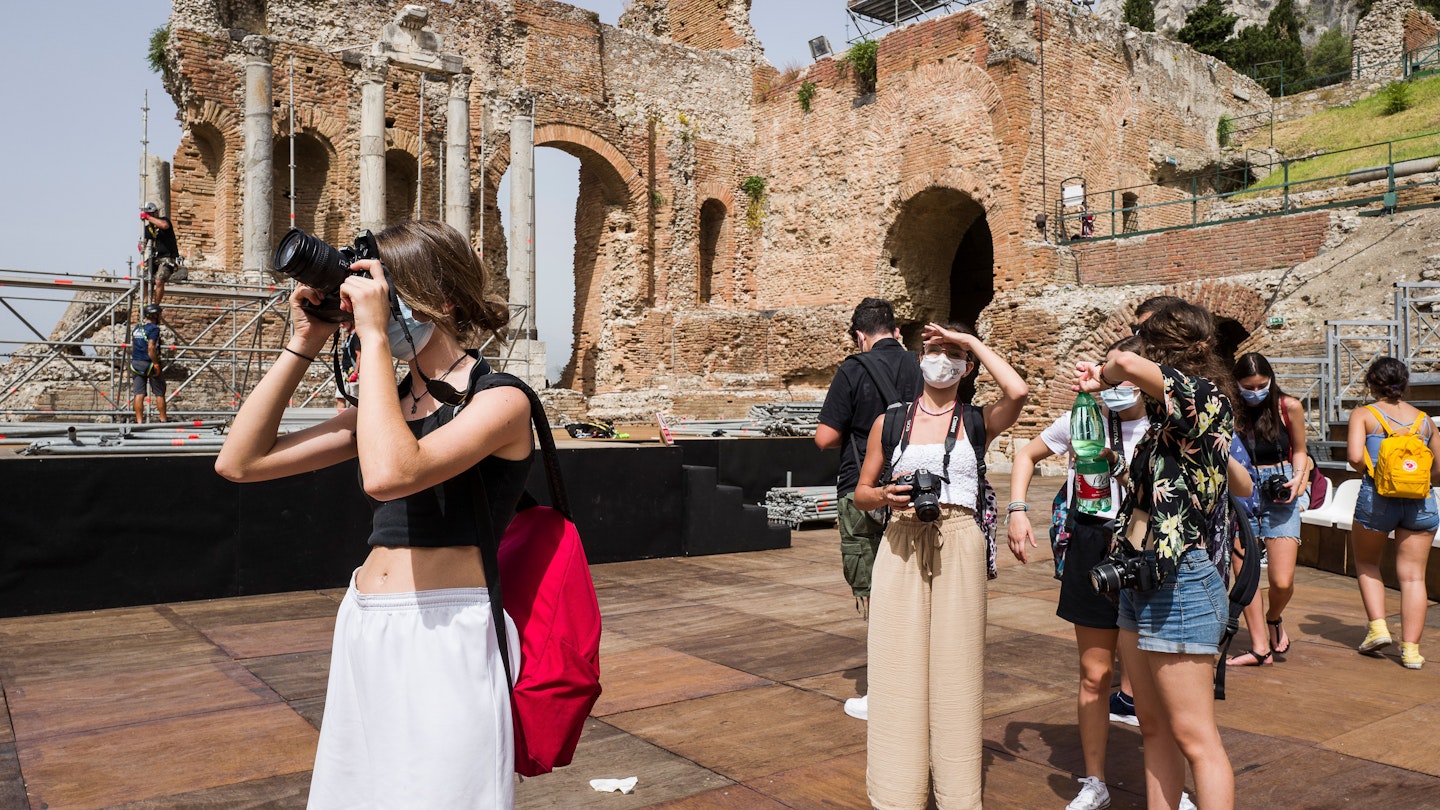
Tourists return to the Teatro Antico in Taormina, Sicily as Italy relaxes border and domestic restrictions © Fabrizio Villa/Getty Images
Italy has gradually relaxed border controls and most restrictions as travelers return to one of the world's most popular destinations. And while there are plenty of new attractions to enjoy, from newly-opened secret tunnels in the Colosseum to recent discoveries in Pompeii , it isn't business as usual. Italy is still in a state of emergency and some pandemic-related restrictions apply, including the requirement of a green pass to enter indoor venues and large events.
With the ongoing threat of the Delta variant, travelers are warned that increased measures could be enforced with little notice. If you're planning a trip to Italy this year, here's what you can expect.

Can I travel to Italy from the EU?
Italy has adopted the EU digital COVID certificate which facilitates the return of free movement across the bloc. It's a digital or paper certificate that indicates the holder meets the conditions for travel: is fully vaccinated (the last dose administered at least 14 days before departure), or has recovered from COVID-19, or holds a negative COVID-19 result from a PCR or antigen test taken within 48 hours of travel.
Read more: Planning your perfect trip to Italy's Amalfi Coast
You will need to present this cert to enter Italy, regardless of where you are traveling from in the EU. That's because Italy does not classify risk areas in accordance with the EU's recommendations and currently no country is classified as low risk. So even if you are coming from an EU country that is classified green (low risk) in the European Center for Disease Prevention and Control’s traffic light system, you are still required to present a digital COVID cert to travel to Italy.
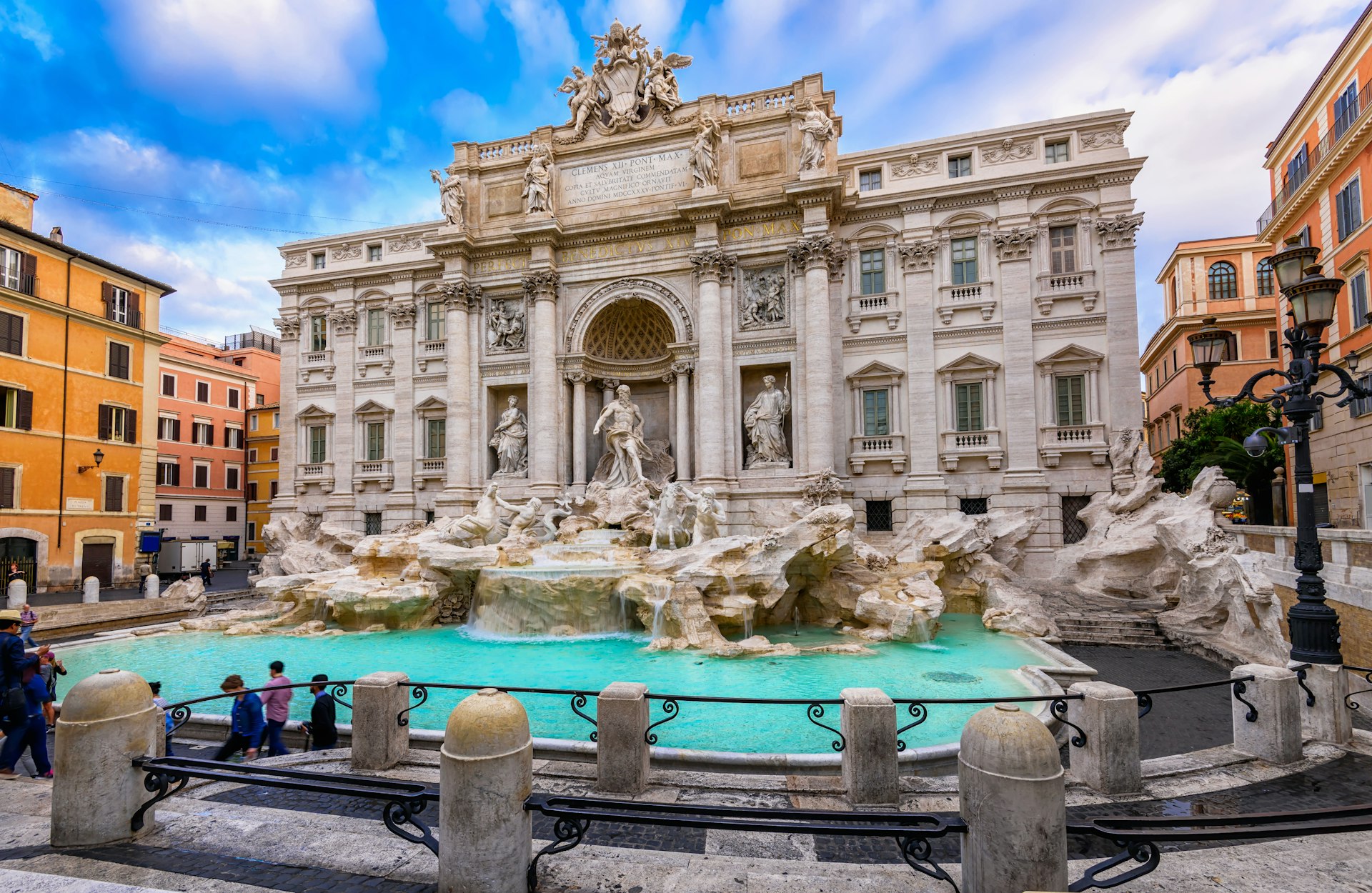
Can I travel to Italy from a non-EU country?
Italy applies border restrictions on travelers depending on the COVID situation in the country they are departing from. Most countries are on the C and D list and quarantine restrictions apply to all of them except for the US, Canada, Japan and Israel . People arriving from those countries are permitted to skip quarantine provided they present proof of vaccination, proof of recovery from COVID-19, or a negative result from a test taken no more than 72 hours before traveling to Italy, using official vaccination or medical documents issued in either of those countries.
Those arriving from the UK will have to undergo a five-day quarantine upon arrival with mandatory testing until at least August 30.
Entry restrictions for individual countries can be found here .
What vaccines does Italy accept?
Italy requires that travelers are fully vaccinated with both doses of an EMA-approved vaccine: Pfizer, Moderna, or AstraZeneca; or with the one-shot Johnson & Johnson vaccine.
Do children need to be vaccinated to enter Italy?
Children under six-years-old are exempt from all vaccine, testing or quarantine requirements in Italy. However, children between the age of six and 18 are required to present a negative COVID-19 test result before arrival.
What else is required?
All arrivals are required to fill in a passenger locator form before arrival, regardless of their COVID status or point of departure.

Do I need a green pass in Italy?
Yes, if you want to enjoy most of Italy's cultural attractions, you'll need a green pass. The pass proves that the holder has been vaccinated, has recovered from COVID-19 or has recently tested negative for the virus. People need to present it to enter indoor spaces such as museums, football stadiums, gyms, theme parks, spas, swimming pools and theaters. It's also required to sit indoors at bars and restaurants; and from September 1, it will be required to board public transport in Italy.
Anyone traveling from another EU country, can present their EU digital COVID cert wherever the green pass is required. People traveling from a Schengen Zone country can present their official health documents too.
The Italian government confirmed that it will accept official COVID documents that were issued in Canada, the US, the UK, Japan and Israel from tourists too in place of a green pass. This was later extended to cover all official vaccination certificates that are compliant with Italian or EU guidelines. In order for it to be accepted in lieu of the green pass, the certificate must be in Italian, English, Spanish or French and contain the following information: type of vaccine (Pfizer, Moderna, J&J or AstraZeneca), date of doses and lot number, as well as the person's name and the name of the medical authority issuing the certificate.However, despite the guidelines, some tourists have reported difficulty with having their certificates accepted at venues.
If you're not vaccinated, you'll need to be tested via a PCR or antigen test within the previous 48 hours.
Read more: Italy has expanded the use of it 'green pass' - here's what travelers need to know
Can I get tested in Italy?
Many countries, including the US, require passengers to present a negative COVID-19 test result before boarding their flight home from an international trip. Fortunately, tests are widely available across Italy in pharmacies, labs and testing centers. Antigen tests cost approximately €20, while PCR tests are generally around €65.
The Red Cross has pop-up testing sites in train stations across Italy , including Roma Termini, Milano Centrale, Venice Santa Lucia and Florence Santa Maria Novella for antigen tests. On-site testing is available at Italy's major airports too, and most offer both antigen and PCR tests but check the website of the airport you are traveling through in advance for details.
Read more: Italy visa requirements
What's open in Italy?
Italy is home to many of the world's greatest works of art, architecture and gastronomy, and has more Unesco World Heritage cultural sites than any other country. Among its popular attractions are Pompeii , where visitors can walk in the footsteps of ancient Romans, and Ravenna , home to glittering Byzantine treasures. The gondolas of Venice take in the famous Rialto Bridge , while Rome is home to St Peter's Basilica, the Vatican Museums and the Colosseum, as well as the iconic Trevi Fountain.
Thankfully, you can experience these sites with relative ease as all Italian regions are now classified as "white zones". Italy classifies its regions into colored areas based on the epidemiological risk; different restrictions apply, depending on the color. White zones are very low-risk zones. Most restrictions have been lifted but social distancing guidelines remain in place in public areas, as do mask requirements in crowded outdoor places, on public transport and in indoor public spaces.
Indoor dining has returned to Italy's restaurants, cafes, bars, ice-cream parlours and pastry shops. Some capacity limits apply but the general rule is no more than six people per table. Anyone who wishes to eat inside will need to show proof of vaccination, recovery from COVID-19 or a recent negative test. Hotels, spas and swimming pools are open, as well as beaches but visitors must keep at least one meter apart when setting up towels, deck chairs or umbrellas.
Museums and cultural attractions are open for walk-ins with capacity limits Monday to Friday and for those with pre-booked tickets on weekends. Cinemas, theaters and concert halls are generally open at 50% capacity. Again, remember to bring your vaccination card if you're planning to visit any museum or cultural attraction in Italy.
For a full breakdown of restrictions per region, see here .
This article was first published on May 5 and updated on August 23, 2021.
You might also like:
Eat Italy: learn about Italian food culture with Lonely Planet's new book 12 essential places to visit in Italy The 10 best beaches in Italy
This article was first published May 2020 and updated August 2021
Explore related stories
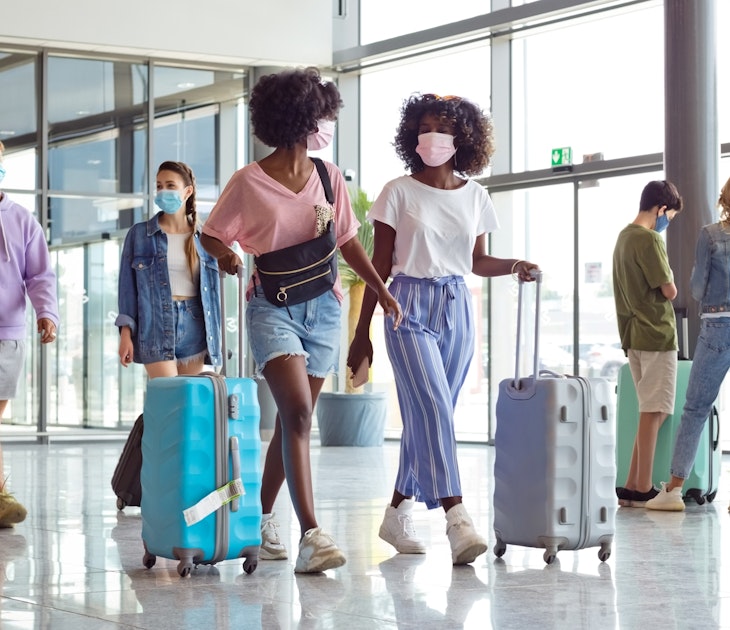
May 16, 2022 • 4 min read
The policy changes on May 16, but there are still many countries who require passengers to keep masks on during flights.

May 10, 2022 • 4 min read

May 4, 2022 • 3 min read

Apr 29, 2022 • 2 min read

Apr 22, 2022 • 3 min read

Mar 31, 2022 • 9 min read

Feb 24, 2022 • 2 min read

Feb 18, 2022 • 3 min read

Feb 3, 2022 • 3 min read

Jan 18, 2022 • 7 min read
Vai al Contenuto Raggiungi il piè di pagina
Follow us: Facebook Twitter Instagram YouTube Linkedin
- The President of the Council of Ministers
- The Government
- The Presidency of the Council of Ministers
Covid-19: travel information
Considering the epidemiological situation, Italy has foreign travel restrictions in place depending on where you are travelling from/to.
An interactive questionnaire is available from https://infocovid.viaggiaresicuri.it to check the rules currently in force regarding travel to and from Italy.
Please find below a list of other useful web pages:
- Covid-19 Information for travellers
- Information for Italian nationals returning to Italy and foreigners in Italy
- Information from Embassies and Consulates
- Useful information for travellers on the ‘Viaggiare sicuri’ website

Italy travel requirements 2024: What travelers need to know
We aim to keep this post updated about Italy travel in 2024 with official Italy travel restrictions, requirements, and health and safety guidance. Our goal is to help you make informed decisions so you can travel confidently, safely, and responsibly in this new post-pandemic world of ours.
Italy has a special place in our hearts, and we finally returned in Fall 2022.
As restrictions vary based on the traveler’s citizenship, we will focus primarily on rules affecting U.S. citizens.
Last update: January 28, 2024. Originally published: July 2020.
* Get our free Post-Pandemic Travel Checklist *
Photo credit: Annalisa, Rome January 2024: “Tourism in Italy right now is flourishing, and although it is low season, there is a considerable amount of travelers both in art cities such as Rome, Florence, and Venice, and in small villages. In tourist spots such as museums and archaeological areas there are no restrictions of any kind, except in cases of overbooking such as for the Colosseum in Rome, so I recommend booking tickets at least two months in advance. The business of restaurants, hotels, and vacation homes is normal and busy. Access to health care takes place as usual, with regular and free access to checkups and treatment through hospital emergency rooms for Italian residents and nonresidents. As for Covid tests, although they are not required by any tourist facility, they can be done in all Italian pharmacies for a cost of €10-15.” -Annalisa of Rome Travelogues , Resident of Italy
At the end of the post, we share on-the-ground perspectives from local residents and travelers to Italy so you’ll get a true sense of what to expect.
Table of Contents
Can US citizens travel to Italy? Can I travel to Italy right now?
Italy is open to all travelers, including US citizens who are traveling for tourism.
As of June 2022 , all travelers, including US citizens are no longer required to show a vaccination, recovery, or test certificate upon arrival to Italy. All travelers can enter Italy without quarantine.
Most Italy travel restrictions have been lifted as of May 1 for activities inside the country. See regional restrictions here and regional zone classifications here .
Visitors from over 60 visa-exempt countries , including the U.S., will soon be required to have a European Travel Information and Authorisation System (ETIAS) travel authorization to enter Italy and other European countries . The start date has been delayed from 2024 to 2025.
See details about ETIAS here
Quarantine rules in Italy: What happens if I get Covid?
Travelers are not required to quarantine upon arrival in Italy.
For those who test positive for Covid while in Italy, self-isolation for five days or until testing negative, followed by masking up to 10 days, was the latest requirement. More recently, locals report that quarantine is no longer being enforced.
Italy Green Pass Requirements to Enter Restaurants, Attractions and Large Events
You might be wondering: Do I need a vaccine certificate or Covid test to enter restaurants and attractions in Italy?
Italy’s green pass (basic or super green pass) is no longer required to access restaurants, businesses, public transport, or participate in certain activities.
However, the Super Green Pass is still temporarily required for anyone age 12 and older to access hospitals or care homes.
Can Americans travel to Italy in April 2024? Can US citizens travel to Italy this Spring?
Travel to Italy in April is open . Read on for details and check back for updates.
What is it like to fly to Italy FCO or CIA Rome International Airport right now? In Rome, body temperature checks through thermo scanners may be taken at the entrance of the airports. The airports sanitize their spaces daily.
For travelers entering Italy from other countries, check with your airline about current mask requirements on board.
Do Americans have to quarantine when traveling to Italy? Quarantine is not required upon arrival.
See details above.
Does Italy check COVID-19 symptoms of incoming travelers? Body temperature may be scanned in the airports for inbound and outbound travelers.
Does Italy require a negative Covid 19 test for American travelers? A negative Covid test is no longer required to enter Italy.
Does Italy require a proof of Coronavirus vaccine for American travelers? Proof of Coronavirus vaccine is no longer required to enter Italy.
Do I still need to provide a negative Covid test or quarantine if I have been vaccinated? Neither proof of vaccination, negative test, nor quarantine are required to travel to Italy.
Is a booster shot required for travel to Italy? A booster shot is no longer required to enter Italy.
However, a booster shot is needed for the US vaccination card to be considered a valid Green Pass to enter healthcare settings while in Italy. See Green Pass Requirements above.
What Covid testing options are available for travelers in Italy? PCR and antigen tests are available for U.S. citizens and visitors in Italy. Antigen tests cost approximately 20-30 euros while PCR tests can cost around 70.
Individuals in Italy can get a Covid test from the following:
- Government-approved testing labs
- Testing facilities with English-speaking doctors in Italy
- On-site testing facilities at international airports in Italy, such as Milan, Rome Fiumicino, Cagliari, Florence, Malpensa, Bari, Venice, Pisa, and others.
- Private testing labs and pharmacies in Italy
What healthcare options are available to travelers in Italy who get the virus? Tourists and visitors may access Italian health care and emergency services by paying out of pocket or with privately purchased travelers’ insurance. Tourists can also contact the Italian Covid hotline at 1500 (free toll number).
For travel insurance that covers Covid, check out Nomad Insurance by Safety Wing >
What service businesses and restaurants are open in Italy? Bars, restaurants and all other establishments are open. Both indoor and outdoor dining are allowed.
Are face masks required in Italy? As of October 2022, wearing of masks in Italy is no longer mandatory except in healthcare settings.
Are buses and trains running in Italy? Public transportation is available throughout Italy at normal capacity. Masks are no longer required on buses, trains, etc.
Will Italy impose new Covid restrictions? What’s next is difficult to predict. Historically, most countries impose COVID-19 restrictions when strains on the health care system might become unsustainable.
How has the Coronavirus impacted Italy?
Italy was the first country in Europe affected by COVID-19 and was hit hard by the outbreak, requiring strict lock downs. Another large spike in cases occurred at the end of October 2020. A nationwide state of emergency continued through 2022.
Italy’s economy, which includes a large tourism sector, has faced its deepest recession in history. More than 200,000 tourism-related jobs were discontinued in Italy by the end of 2021– accounting for a massive shortage of workers in the country.
In May 2021, Italy formally opened its borders to international travelers from select countries to revive tourism. In June, Italy eased its restrictions for international travelers, then tightened somewhat due to the Delta variant and Omicron variant.
Italy’s state of emergency ended on March 31, 2022.
Italy obtains its vaccines via an EU procurement program. On December 27, 2020, Italy vaccinated the first residents against COVID-19. Currently, three quarters of Italians are fully vaccinated.
For the current situation in Italy – including how bad is covid in Italy today, total COVID-19 positive cases; daily number of cases in Italy; and COVID-19 recovery rates in Italy, please see the statistics here .
What should you pack for safely traveling in Italy?
😷 Face Masks – Face coverings are recommended in public spaces and required in healthcare settings. Find N95 masks at Bona Fide > or designer options at Vida >
💊 Medicine – Bring enough prescription and over-the-counter medication for your entire trip to avoid trips to the clinic.
💳 Vaccine Card Holder – Protect that paper CDC card when traveling abroad (if your country doesn’t offer a digital version). Get a simple plastic protector > or Vegan leather clippable > or Leather passport + card combo holder >
👃 Covid self-test – The most studied rapid antigen self-test with FDA emergency authorization. NOT valid to enter countries. Use for your own peace of mind. Order from CVS > or Walmart >
💧 Sealed water bottle – Make sure your reusable water bottle has a lid that’s not exposed to the air. We use one of each of the following: Shop insulated water bottles with protective lid > Shop water bottles with purification filter and protective lid >
✈️ Travel insurance that covers Covid – We’ve started using Nomad Insurance by Safety Wing for affordable evacuation, international medical, and trip coverage.
What do Italian locals and recent travelers say about visiting Italy now?
What is it like to visit Italy right now? It’s our goal to provide regular updates here from real people on the ground, to help potential visitors know what to expect.
The following are subjective opinions only. Official travel guidance can be found above.
October 2023 – Louisa Loring of EatingAroundItaly , resident of Italy: “Expect to come to Italy and travel as freely as before the COVID pandemic. Currently, there are no laws or recommendations for masking, social distancing or public gatherings. Today, all historic monuments are open as usual without restrictions.
There is no requirement for those who show symptoms. The Italian public healthcare system has removed its state of emergency and it’s easy to access the emergency room.. Private healthcare facilities are free to test patients if they choose too.
Since COVID, there has been an enormous increase in pre-bookings for museums in Italy. Although not all museums require that you pre-book, most people do and it can save you a lot of time waiting in line. Most museums have an easy and hassle free online booking system with paperless tickets.”
September 2023 – Linda of insieme-piemonte.com , resident of Italy: “Italy has, especially in summer, many crowded places. However, beautiful Piedmont, in the northwest of the country, remains a hidden gem: cheap, hospitable and visited by Italians at most in high season.
At the moment, Covid is no longer an issue. There are no restrictions or protective measures. During the pandemic, however, very strict rules prevailed throughout the country, including house arrest for several weeks.”
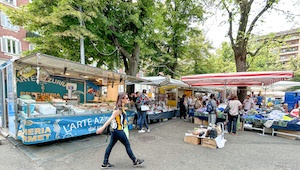
June 2023 – Natalie Deduck of Best of Turin , visitor: “My husband and I come to Turin to stay a month and later travel to other destinations in Italy.
The main tourist destinations such as Rome, Amalfi Coast, Florence, and Milan are receiving a tremendous influx of tourists this Spring and Summer. We are glad that we choose Turin for our longer stay. It is an incredible destination but not as famous as the other places, so here we can enjoy all the best of Italy without hassling with crowds.
Since I landed in Italy, I didn’t see any advice or signals about Covid measures or how to behave in public spaces. No one wears masks, and businesses are open as usual, including bars, restaurants, clubs, museums, and open-air markets.
Everything is pretty much back to normal. My husband and I lived in Turin in 2019 and 2020 during the pandemic. We experienced Italy in its worst moment, and it’s so good and heartwarming to see life back to what it was before the pandemic.”
January 2023 – Zoe of Together In Switzerland, EU visitor: “For our visit to Como, Italy for 2023, the location was pretty busy and lively. All shops and restaurants are open and seemed like a good mix of locals and tourists.
It’s not mandatory, but many do choose to wear a mask such as on the local bus or when in the main shopping area. There were absolutely no checks during our whole visit in Como, however you do see that local stores do still have a those plastic protection areas at the cashier tills and hand sanitizers is available at entrances. We personally didn’t see many people using these and no minimum space was needed. The only crowded area we encountered was for a busy local restaurant that everyone wanted to eat at.”
October 18 2022 -Michelle, Intentional Travelers: “Italy’s tourism feels back in full force and daily life has resumed as normal. Some people wear masks in grocery stores, trains, or other public areas but not many. On the train back to Rome airport, we saw staff sanitizing handrails in all the train cars. Lines at FCO airport seemed typical, and we passed through check-in, security and customs relatively quickly (25 minutes) on a weekday morning. We didn’t have to show any Covid documents, only passports.”
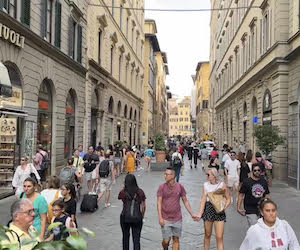
September 2022 – Michelle, Intentional Travelers: “We flew into Florence, Italy and took trains through Tuscany in September. To enter Italy, we only needed our passports. Air Dolomiti airlines required masks on the flight.
The Florence airport tram into town had signs that masks were required but maybe 50% of people were masked. Around Florence, it is as busy as ever and highly recommended to make reservations for big attractions in advance. Masks were still required on the regional trains in Italy, enforced by staff and audio announcements. Otherwise, tourism does seem back to normal.”
June 3, 2022 – S.M, American digital nomad – “I flew today to Rome from Croatia. They didn’t ask for anything covid related. No test or vax cards. But we had to wear N95 mask on the plane, that’s it.”
May 2022 – Lyndsay at thepurposelylost.com : “I’ve been living in Italy and exploring the country for six months now, and the past few days were the busiest I’ve seen the cities! As the weather gets warmer, we’re expecting an uptick in tourism, which is definitely what I’ve encountered so far. Tourists are eager to experience la dolce vita again!
Although you don’t need to wear a mask walking around outside, masks are still required on public transportation like busses, metros, and trains, and highly encouraged for all inside spaces like restaurants and shops. You’ll even find a mix of people wearing masks at public outdoor events.”
March 24, 2022 – Heather American/Italian dual citizen: “I flew into Rome and then proceeded to take several trains and a bus to get to a tiny village in Abruzzo where I will be living for the next five months. Masks are required inside all buildings, and most buildings have signs indicating you need to show a Super Green Pass for entrance. Trains and buses did check for my Super Green Pass and my CDC card showing my booster was accepted readily.
Italians are still taking things pretty serious, regarding masks, etc.”
March 2, 2022 – Sarah Wilson of Life Part 2 and Beyond , British visitor: “I’m in Florence for 10 days learning Italian. I was surprised how many tourists were here over the weekend. Queues were long to many of the major sites. They do check your Green Pass every time you enter a tourist attraction, and restaurant. Some shops also insist on seeing your Green Pass but not all. Masks are being worn inside but not needed outdoors.
There are plenty of pharmacies, many offer COVID testing or the rapid antigen tests. All the pharmacists in a city like Florence speak great English. To reduce waiting in line, I recommend booking attraction tickets online in advance.”
Candice of Mom in Italy , Permanent Resident: “It’s a nice time to visit because you can visit places like the center of Florence and its museums without any crowds.
We’ve also been visiting smaller villages like Pienza, Montepulciano, and San Gimignano, but they’re a little too empty. Almost all shops and restaurants are closed, due to the lack of local visitors. For anyone thinking of coming to Italy right now, I’d stick to the bigger cities, where you’re guaranteed to find things open and still full of Italian ‘vita.’
Throughout the entire pandemic, I’ve been impressed by the cooperation of Italians. People here wear masks when/where required and for the most part, respect the rules. Visitors need to follow the rules too – for example, if you don’t have the Green Pass here, you can’t sit down in an indoor restaurant. Owners don’t distinguish between locals and tourists – everyone has to have their Green Pass scanned or checked.
It’s easy to get tested in Italy – there are private clinics and you can also get tested in pharmacies. You can also get English translations easily. It’s not a great time to come to Italy if you aren’t vaccinated (or have proof of recovery from COVID within the last 6 months). Pretty much anything you’d want to do as a tourist right now requires the Green Pass.
We haven’t found any long lines or crowds, although I expect there will be an influx of visitors in the spring because Italy’s precautions help make it a less risky destination and people are ready to come back to Italia!”
January 2022 – Claudia of Strictly Rome , Italian resident: “All attractions and places of interest for tourists are currently open in Italy. Visits to restaurants typically start with the staff coming to the table to check your “green pass” (the Italian vaccination card). Much like locals, tourists are required to show proof of vaccination or of having recovered from Covid to access attractions, restaurants, hotels and transport – including trains and local / city buses. Everyone in Italy follows the rules, wearing masks wherever required and showing their vaccination card to access public places, restaurants, attractions, transportation and the like. Antigen tests are available at any pharmacy, best if upon booking and depending on the city and region in Italy there may be a line to get tested. Access to health care remains free for everyone on Italian territory, including visitors. You will be significantly better off making restaurant reservations as with Covid restrictions and social distancing availability for tables in popular tourist destinations may be limited.”
December 2021 – Or of My Path in the World , Israeli traveler: “I flew to Turin for a one week leisure trip in December 2021. I felt very safe in Turin as everything was well organized and it seemed like the locals were determined to live “normally” again. Everyone follows the current restrictions, and some people even wear masks outdoors though it’s not mandatory. You can’t enter a museum or a restaurant without your Green Pass being scanned (unless you’re sitting outside), and some attractions require a reservation in advance because you need to pick a specific timeslot for your visit. There are quite a few places for covid tests, and a PCR test for your flight back home will cost you about 70 Euros.”
November 30, 2021 – Morgan Fielder, Crave the Planet , E.U. expat: “It’s so great and easy to get reservations at awesome restaurants with fewer tourists. The airports in Italy have gotten more efficient and travel has been extremely easy since August if you are vaccinated and keeping your mask on appropriately. Yes, people follow the rules. Access is good to hospitals and if there’s any hint of problems, then businesses and events have gone to only letting in vaccinated or recovered people. Contract tracing is done via app when you go inside a venue or restaurant.”
September 20, 2021 – Sarah Wilson , British expat in Malta: “I was in northern Italy at the beginning of September for two weeks and now I’m in Sicily until the end of the month. The locals are very welcoming. It’s been a tough time for many businesses in Italy, so they are very happy to receive tourists. I literally had Rome to myself, so if you enjoy travelling without the crowds, now is the time to visit. To enter any restaurant, museum or tourist site, you do have to show your vaccine certificate. Some places like the restaurants in Lake Como also asked for your name and phone number. Masks are worn on all public transport and indoors and majority comply. Sicily has recently turned yellow which means masks are supposed to be worn indoors and outdoors – very few wear them outdoors – it’s too hot.”

August 2021 – Abigail, American traveler : “I went to Italy for a weekend. I felt safe and all of the stores were open. There was a green pass that people used to dine indoors, however since I’m a US Citizen I did not have one. Instead I showed my vaccination card, and it was asked for at every establishment. They did not ask for the Covid pass for public transport for Venice or Milan during my stay. For sit down restaurants, they wouldn’t let you in the door if you could not show vaccination. I did see a lot of seats for outdoor dining everywhere I went though.”
August 2021 – Caroline A., South African/Italian visitor: “My husband, 7 year old son, 4 year old daughter and I are in Rome for three months for an adventure as we have dual citizenship. Tourists are very much welcome in Rome at the moment although museums are requiring the green pass to enter. Since we are not vaccinated, we have been getting tested for entering museums, which lasts 48 hours. Testing is widely accessible. Most attractions are open for visits with covid protocols in place. There is a festive mood in the air as many people take their vacation over this time. It is wonderful not to have to wear a mask outside.”

July 2021 – Kathryn, American Traveler: “I flew from Spain to Naples, Italy and stayed 2 days in Positano, 2 days in Sorrento, and 4 days in Rome. The locals were happy to have patrons in their cafes and restaurants. We had several people tell us how happy they are to see return of tourism. All public transportation was running as it would pre-pandemic (masks always required). We took planes, trains, taxis, boats and buses with no restrictions. Some restaurants required you to write down name, phone number, country of origin for contact tracing. Otherwise, no restrictions for outdoor dining and tables were quite close to each other as you would typically experience in Europe. Indoor dining often had more space between tables to allow for social distancing. In Rome, there were quite a few walk-up COVID testing tents throughout the city to use if needed. Rome sights were much less crowded than what I’ve experienced past summers. All major tourist sites were open. They offered both advance tickets and walk-up (usually wouldn’t be possible due to large numbers of tourists in the summer, but with less tourists this year it was possible to purchase day-of tickets). They had temperature checks at most major sites and required masks if indoors.”
June 2021 – Alexander and Cynthia, Travel your Memories , Dutch visitors: “We flew to Rome and visited for 4 days. After Rome we travelled to Florence for 2 days. Because you can do many activities outside, Italy is prefect to travel to at the moment. The population pays very close attention to the guidelines of COVID. All sights have been adjusted accordingly. Only a maximum number of people are allowed in the shops (depending on the size). If you get cold symptoms, you can go to a test street. For major sights it is important to book your ticket in advance because you have to fix a time slot.”
May 2021 – Sarah, Benvenuti Arts, American: “I have a visa as I’m here to teach at a University, and traveling into Italy felt joyful! The crew on the flight were so happy to see us all, and there were only about 30 passengers on the plane. The customs officials were very nice and the people doing COVID-testing in the airport were very friendly. While the rules, as read, seemed more strict than the US, I’m noticing people’s interpretation of those rules is just as scattered as in my country. I happened to arrive right when they reopened after the Easter lockdown, and people seem to be thrilled to be outside. We wear masks in all public areas, and there is no indoor dining, so in general it feels safe. But I am finding myself a bit overwhelmed by crowded areas, like places where students hang out. That’ll take some time to get used to again! I would say, if someone is traveling soon, be respectful and be overprepared. Rules were changing weekly in the lead up to my visit, so I have so much documentation printed that I haven’t needed. Everything takes a bit more preparation than you might be used to in Italy, too. Some restaurants require reservations. Museums are open, but with timed, pre-reserved tickets. There is no indoor dining. There’s a curfew. I am usually loose with my planning when I travel, but am doing more of it just because it’s required. But the food is amazing, the people are lovely, and the city is beautiful, so even with some adaptations, it’s amazing to be here!”
April 2021 – Chicca, Cooking in Tuscany , Italian resident: “We have been living a lockdown life since October – I have to say we’ve got so use to it. But just these days our prime minister has announced to relax some of the strict coronavirus measures starting April 26. The vaccination plans are rolling out quite consistently to have the majority of the population vaccinated by this summer. I read here and there that maybe borders will be opening first to Europeans and then to Americans. We don’t know when but, yes, I start dreaming of having visitors again.”
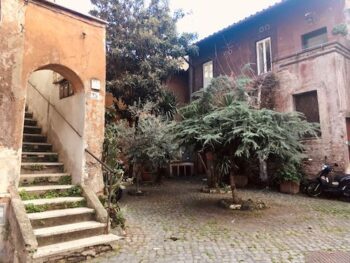
January 2021 – Clotilde, A Princess Travelling with Twins , Italian living abroad: “I flew to Rome, with my husband and our twins over the Christmas period for 10 days to visit family. People working in the tourist sector are really welcoming and try their best to respect, and make customer respect, the rules and regulations. They have been suffering a lot from the lack of tourists and all the imposed restrictions, so they are happy to see tourists coming back but other people are more cautious. News of the new variants of the virus have particularly made people more alert. The biggest issue when travelling to Italy right now is the rules change really quickly, the country can ban specific countries without warning as happened over Christmas with people coming from the UK. On top of that, each Italian region is defined by a colour depending on the level of the infection rate. This reflects also in services opening times that change unexpectedly and often forget to update their websites or search engines. For example you could be stranded at the airport wondering what to do as the rental car office where you booked your vehicle has closed and the curfew time is approaching, as happened to us! “
September 2020. Rebecca Ann Hughes, journalist – permanent resident of Venice: “Tourist numbers in Italy have been low all summer. For those who come to visit, they are seeing popular tourist destinations as never before, but many businesses are struggling. Locals whose work is fed by tourism are eager to welcome back visitors but many of them, along with those who do not work in the tourism sector, are pushing for a change in tourism. Particularly in Venice, they want visitors who travel “slow”, who are respectful, and who interact with the community. This includes following COVID regulations imposed by local councils and the government. Recently, a tourist on a vaporetto (waterbus) in Venice refused to wear a mask, angering locals and causing a fight to break out. Visitors should be well prepared to follow the regulations in Italy, even if they differ from their home country.
Most tourist attractions, public transport, restaurants, bars and other amenities are open and functioning as normal, albeit with social distancing rules and the obligation to wear a mask. It is possible that some tourist attractions will require advanced booking and may have longer queues if the venue is taking temperatures upon entry. Visitors may often have their temperature taken when entering a restaurant. When entering a building or getting on public transport, use hand sanitiser if it is provided. Testing booths have been set up in many airports and visitors can download a contact tracing app for Italy.”
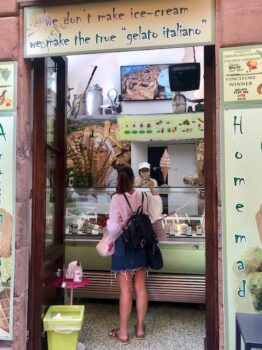
Planning a trip to Italy?
Check out our other Italy travel resources: – Self Guided Walking Tour of Florence – Lucca Day Trip Guide & Walking Tour – A Guide to Tuscany’s Etruscan Coast – Cooking in Tuscany Classes – Hiking Cinque Terre Itinerary – Packing List for Europe in Fall/Winter – 7 Hidden Gem Towns on Tuscany’s Coast – Best Beaches in Tuscany Italy – Tuscany Castles to Rent or Visit – Why Visit Italy in September
If you have questions or updates about travel to Italy during the Coronavirus crisis or post-pandemic, please let us know in the comments below.
~ Pin this post for later or share with friends ~
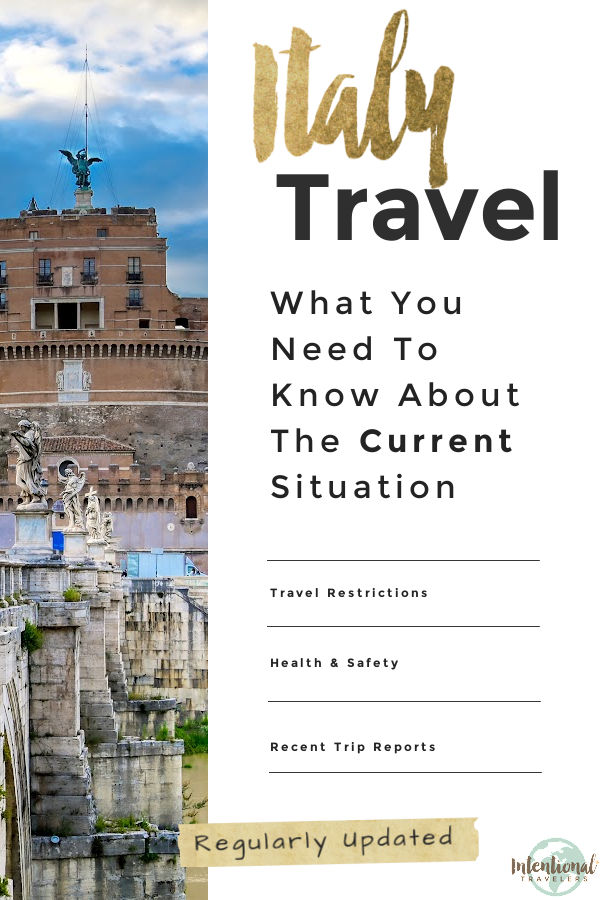
Disclaimer: Please note, travel restrictions change frequently. Readers must take responsibility for verifying information through official sources like the State Department and CDC, in respect to their specific situations. No responsibility can be accepted by Intentional Travelers for action or inaction as a result of information provided through IntentionalTravelers.com. Any information provided here is issued as general information only.
Similar Posts
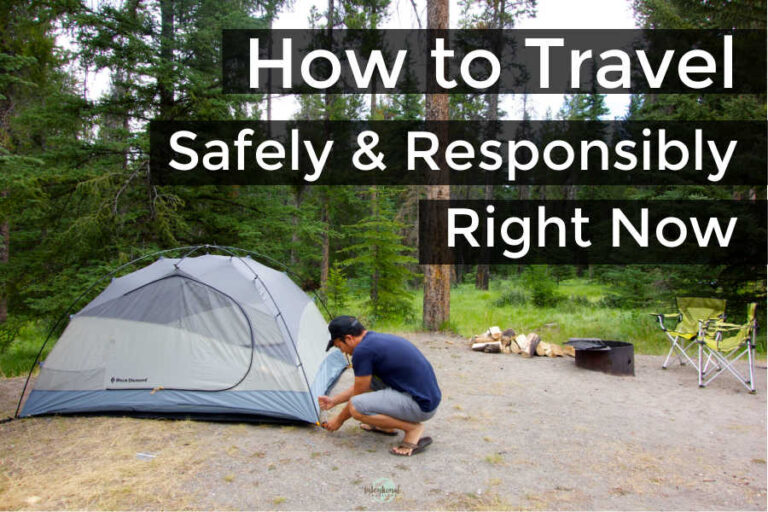
How to travel safely and responsibly in 2022 and beyond
Wondering how to travel safely during COVID-19? Many of us are longing to travel again, but only if we can do so safely and responsibly. We’ve put a lot of thought into the safest ways to take a vacation right now. And we plan to continually update this post with safe travel ideas and tips,…
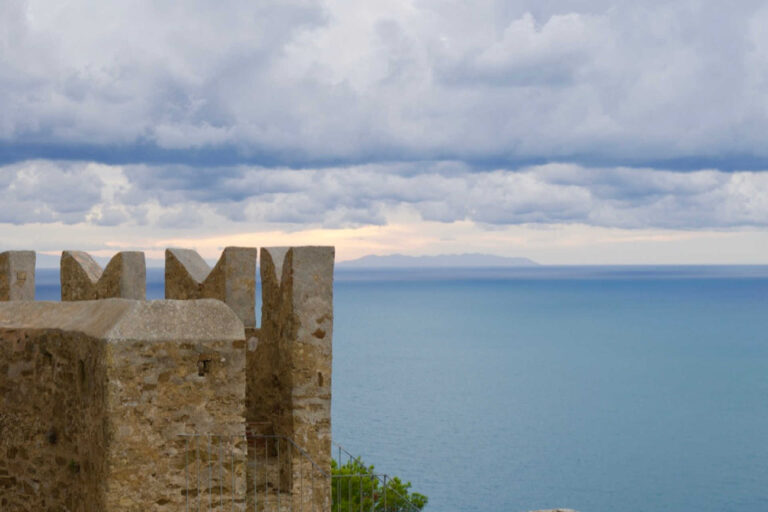
Tuscany Hidden Gems: Etruscan Coast Villages and Towns to Visit
After spending several months on Tuscany’s Etruscan Coast, we can see just how special this little corner of Italy truly is. It has the stunning hilltop villages and vineyards we associate with Tuscany, but also beaches and views of the sea! While Tuscany, Pisa, Siena, and others have become popular travel destinations, the Etruscan Coast…
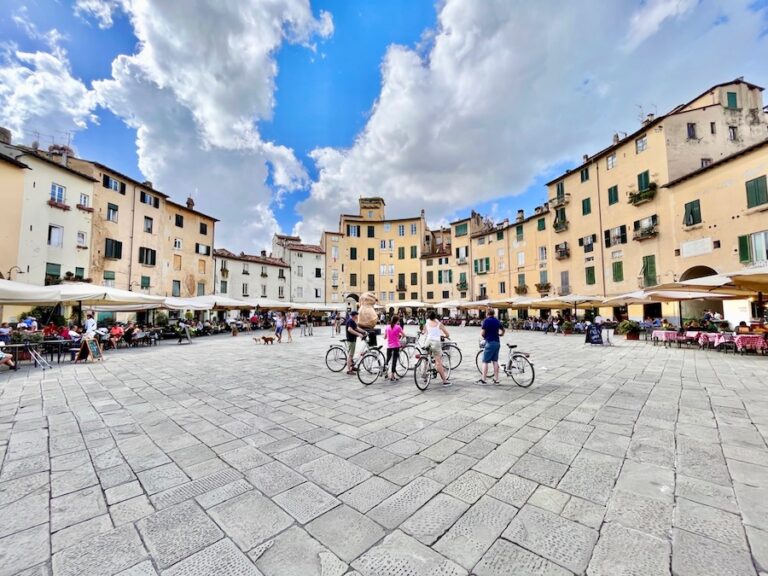
Lucca Day Trip Guide + self guided walking tour from Lucca train station
We loved visiting Lucca on our most recent Italy trip. Though we were fortunate to stay longer than a day in Lucca, we found that it actually makes a wonderful day trip destination! Conveniently, the best things to do in Lucca are within easy walking distance of the Lucca train station. If you have just…
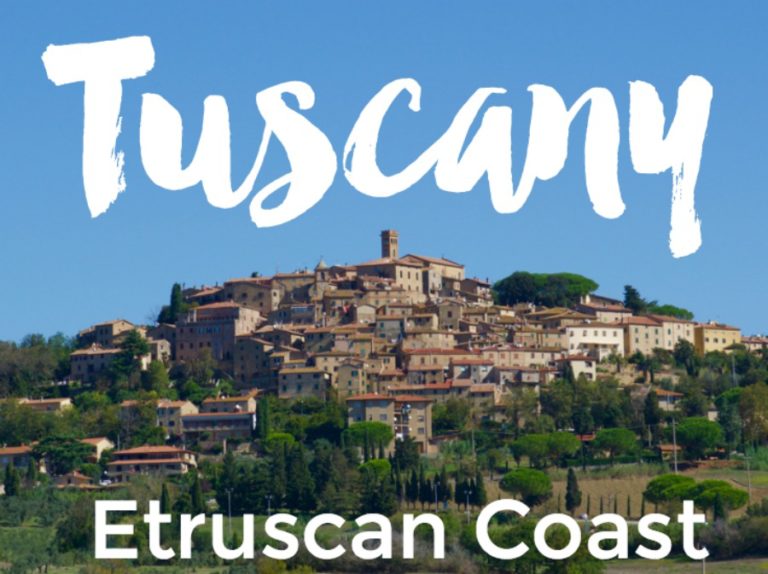
A Do It Yourself Guide to Tuscany’s Etruscan Coast
If you’re an independent traveler looking for self guided tours of Italy where you can get a bit off-the-beaten-path, then consider Tuscany’s Etruscan Coast. Our do-it-yourself guide will help you discover a beautifully unspoiled side of Tuscany on your own, whether you’re traveling for 2 days or 2 weeks. This post will cover: Where to…
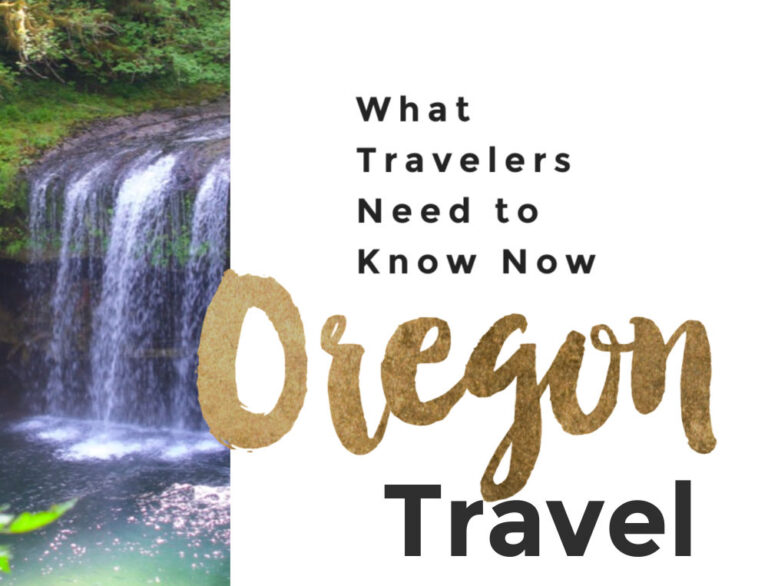
Oregon travel requirements 2024: What travelers need to know
We aim to keep this post updated about Oregon travel in 2024 with official Oregon travel restrictions, requirements, and health and safety guidance. Our goal is to help you make informed decisions so you can travel confidently, safely, and responsibly in this new post-pandemic world of ours. We are Oregonians so this destination is very…
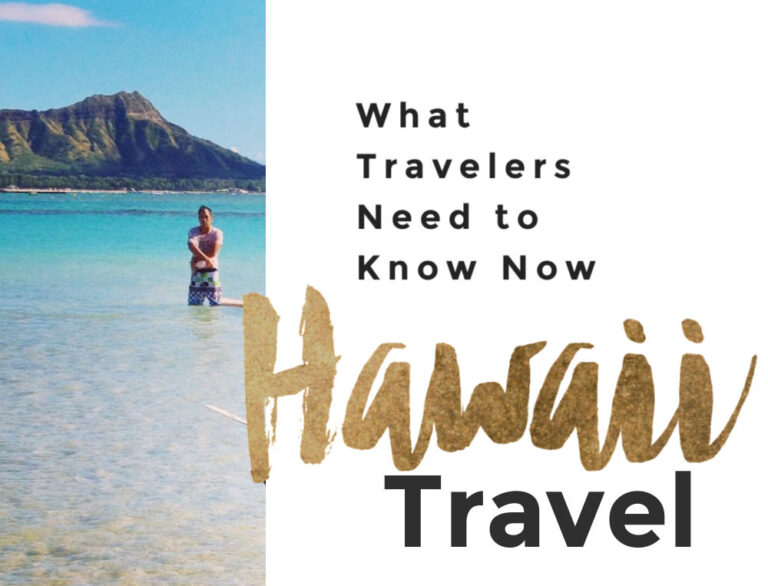
Hawaii travel requirements 2024: What travelers need to know
We aim to keep this post updated about Hawaii travel in 2024 with official Hawaii travel restrictions, requirements, and health and safety guidance. Our goal is to help you make informed decisions so you can travel confidently, safely, and responsibly in this new post-pandemic world of ours. At the end of the post, we share…
32 Comments
Very useful information, thank you, I will be staying in Sicily for 10 days this July!
Hi! Great info! Is it safe traveling to Italy now from the US because of Ukrania- Russia conflict? Thanks!
Thanks, Wilda. We have a good friend in Tuscany who tells us there is no concern about safety in Italy currently, however, prices and availability of some products/delivery is being significantly affected. We recently sent out a Europe update to newsletter subscribers with the following: “If you have plans to travel to Europe, you may be wondering if it’s still safe. Right now airspace over Russia, Ukraine, Belarus, Poland, Slovakia, Hungary, Romania and Moldova are on the EASA risk list [CNN]. But most of Western Europe is hundreds of miles from the conflict, and experts are saying there’s no need to cancel trips [AFAR].” We are planning to travel to Italy ourselves in September-October. Of course, as with Covid, each of us have to make our own assessment based on the level of risk we’re willing to accept when we travel.
Is there a current ban on US citizens (vaccinated or not) traveling to Italy?
Why are US citizens not allowed to travel to Italy at this time as you stated below. I copied and pasted from your article…. Can Americans travel to Italy in January 2022? Can US citizens travel to Italy this Winter? Travel to Italy in January is now allowed for US citizens visiting for any reason, including tourism. Read on for details and check back for updates.
Hi Jamie. I think perhaps you have misread “is NOW” as “is not”? I’ll reword it to prevent future confusion. As you’ll find throughout the rest of our post, Italy IS open to Americans under certain protocols. Thanks for visiting.
Hi Michelle, thank you for making this information easy to digest. I’m unclear on the “green pass” and “super green pass”.
– Green pass: proof of vaccination – so our white vaccination cards work – correct? And no proof of booster is required?
– Super Green Pass: unclear here.
Also, is the “health declaration form” and the “dPLF” form the same? If not, are both needed?
I plan to visit Italy starting late Feb – Mar ‘22 and am now wondering if I should push this to June. With it all changing so fast, maybe I’m being overly-cautious?
Kate, I’m glad you’ve found our post helpful. Whether pushing the trip back to June will make much difference is hard to say. I’ve shared a bit about my philosophy on canceling/rescheduling trips here .
Some of the green pass rules are quite new and it is admittedly confusing. Also it may change again by March! Firstly, yes, your white CDC vaccination card will work as your pass, as long as the latest vaccination date qualifies.
There is now a time limit on vaccination for the Green Passes (though not for entry into the country). At the moment, this means that if your last Covid shot was more than 9 months ago, you would need a Covid test within 48 hours before checking into accommodations or taking public transit. Starting February 1st, a booster shot will be needed for persons who have been fully vaccinated for more than 6 months. As I read it, if your last Covid shot is more than 9 months old, then you would not be allowed to do the activities under the Super Green Pass like indoor dining, museums, or spas without a booster. Again, there is not a lot of detail available about how this works practically yet.
Sorry for the confusion about the forms – the self-certification health form I think might be an old term so I’ll update that in our post. The dPLF digital Passenger Locator Form is what is now required before travel.
Hi there and thank you for your lovely blog. I am traveling to Italy in February, and my second vaccine dose would be older than 6 months, and not able to get a third dose before arrival. Does than mean that I won’t have a green pass and need to undergo a pcr to enter some places?
Auba, thank you for your question. We were surprised by this restriction. It’s all quite new so how this works out practically may change, but I read it as you do. To confirm, I also found this: “All arrivals to Italy with vaccinations considered as expired by Italian standards (see line above) are required to do Rapid COVID-19 tests (available in local pharmacies and test centres) to obtain a Green Pass, which will be valid for 48 hours. The test provider will print your test results and will email you a unique code. You will then need to access the Government website (in Italian) and enter your details. Select the option ‘Utente senza tessera sanitaria’ (‘User without a health card’). You will be prompted to enter the type and number of the ID you showed when you got your test, as well as the code on your test certificate. Click ‘Ricupera certificazione’ (‘Get certificate’) to download your digital test result. You will need to continue with this process for the duration of your stay to enable travel within Italy and to access hospitality and leisure venues including bars, restaurants, museums, exhibitions, sporting events, fairs, civil or religious ceremonies and large events.”
Nice post! I recently applied for an Italy Visa but was sceptical about the travel restrictions imposed by Italian authorities. So, I started searching for some answers and that is how I came across your informative article. It talks about all the important details that a first-time Italian traveller like me should know. Do share such informative blogs about other countries and any possible restrictions that they are imposing. It might come in handy for a lot of tourists who want to get out of their homes after a long season of the pandemic.
Thanks for a great info. Did they ask the covid pass in the public transport? I read that in intercity trains require at least but would like to know the reality. And if Unvaccinated customers can enter an establishment to buy food, but they are not allowed to eat indoors, are there many restaurants with outdoor areas that can be used without the passport? Thanks a lot
Thanks for your questions. The green pass is required in Italy for domestic planes, ferries, inter-regional trains and long-distance buses. For public transit within a city like buses and metros, there are capacity controls and masks required but not the green pass. Taxi drivers do not check for the green pass. Yes, many restaurants in Italy have outdoor seating. We’ll do our best to gather more testimonials about what this looks like on the ground to update our post in the future.
Trying very hard to find out exactly what happens and what options are available to you should you happen to test COVID positive before your flight back to USA. Especially now that fully vaccinated folks are testing positive. Please advise as soon as possible. Thank you!!
Hi and thanks for visiting our blog. According to the CDC website , “People should self-isolate and delay their travel if symptoms develop or a pre-departure test result is positive until they have recovered from COVID-19. Airlines must refuse to board anyone who does not present a negative test result for COVID-19 or documentation of recovery.” So options are pretty limited at the moment if you test positive before returning to the U.S., and I haven’t heard whether that will be reevaluated any time soon.
Hi Michelle! I am a US citizen and I planned for an Italian trip Sept 3-15. Today is the first day i see about the quarantine requirement lift being ended on August 30. Does this mean August 30 they may decide to implement the quarantine period again? Do you think I will be able to do my trip or will it depend on how the Italian government reacts to this upcoming month? Thank you!
Kim, thanks for visiting our blog. The requirements may not necessarily be lifted but rather *reevaluated* at the end of August. It’s not possible to predict what the decision will be at this time. I’m sure Italy wants to keep tourism open and has new protocols like the Green Pass in place to do so more safely, but each country has to weigh that against health and hospitalization risks. For vaccinated travelers, being able to travel is more likely this Fall but nothing’s guaranteed as things continue to change quickly with this delta variant. I know the uncertainty is difficult, which I wrote about in our recent post here: https://intentionaltravelers.com/should-i-reschedule-my-trip/
Hi Michelle! Thank you so much for the reply, we knew there would be a risk to canceling the trip and we are very understanding and flexible. I just hope that we know in advance enough to not give our hopes up. We are vaccinated so hopefully if they restrict anything it’s unvaccinated folks. I’ll keep an eye out for updates!
We are having a lay over at Heathrow Airport. My interpretation of the Covid rules say we will have to quarantine in Venice for 5 days. Is there a “safe zone” in Heathrow that will allow us to enter Venice when we arrive. We are both vaccinated and have digital copies of our CDC vaccine card.
Thanks for visiting our blog, David. It is my understanding that a layover in the UK would mean you’d need to quarantine for five days in Italy, even if you’re only transiting through the airport unfortunately. I have seen reports of recent travelers rerouting flights to avoid the UK for this reason. It appears the requirement is to be in place through August 30, so if you travel after that, it’s possible the rule could change but there are no guarantees.
Hi. I am traveling to Italy in 3 weeks. Where can i get a negative covid test for my re entry to the US. Pharmacy?? Thanks.
Ciao Gianna. Please see the section in our post labeled “What Covid testing options are available for travelers returning to the U.S.?” for these details.
Great blog We’re travelling to Northern Italy in September and supposed to go to a outdoor concert in Marostica. Do you know if there is any plans to cancel outdoor gatherings? Thanks
Hello and thanks for visiting our blog. It’s still too early to know what restrictions might be in place in which regions come September, but we will be sure to update this post as the situation changes. If the concert takes place as scheduled, you’ll likely need a “green certificate” to attend.
How as an American travelers do I obtain a Green Pass?
Thanks for your question. We were actually just in process of updating this post with new information! More details may be forthcoming but it appears that Americans will be able to show a hard copy of their vaccination card, official proof of recovery, or a negative test result taken within 48 hours in place of the digital pass. We’ll be sure to update our information here as more details become available.
Is colosseum ticket free on the first Sunday of every month after pandemic?
That is a good question. We have covered the free first Sunday opportunity previously on our blog, however, the colosseum now follows a different schedule. Entrance is free on select dates throughout the year, however, I have not been able to find a list of those dates for 2021. I would expect that might be published in a bit further in the future.
News all say US travelers can present CDC vaccination card to skip testing. Not true? June 30 2021
Hi Jiang. Thank you for visiting our blog. That information is correct. A CDC vaccination card can be used by US travelers to obtain a “Green Pass”. US travelers with a “Green Pass” are no longer required to undergo testing or quarantine in Italy.
Excellent info!
Thank you for visiting the blog. Safe travels.
Leave a Reply Cancel reply
Your email address will not be published. Required fields are marked *
This site uses Akismet to reduce spam. Learn how your comment data is processed .
Cookies on GOV.UK
We use some essential cookies to make this website work.
We’d like to set additional cookies to understand how you use GOV.UK, remember your settings and improve government services.
We also use cookies set by other sites to help us deliver content from their services.
You have accepted additional cookies. You can change your cookie settings at any time.
You have rejected additional cookies. You can change your cookie settings at any time.
- Passports, travel and living abroad
- Travel abroad
- Foreign travel advice
Warnings and insurance
This travel advice page also covers the Vatican City.
The Foreign, Commonwealth & Development Office ( FCDO ) provides advice about risks of travel to help British nationals make informed decisions. Find out more about FCDO travel advice .
Before you travel
No travel can be guaranteed safe. Read all of the advice in this guide and and any specific travel advice that applies to you:
- women travellers
- disabled travellers
- LGBT+ travellers
Follow FCDO travel on, Twitter , Facebook and Instagram . You can also sign up to get email notifications when this advice is updated.
Travel insurance
If you choose to travel, research your destinations and get appropriate travel insurance . Insurance should cover your itinerary, planned activities, and expenses in an emergency.
Related content
Is this page useful.
- Yes this page is useful
- No this page is not useful
Help us improve GOV.UK
Don’t include personal or financial information like your National Insurance number or credit card details.
To help us improve GOV.UK, we’d like to know more about your visit today. We’ll send you a link to a feedback form. It will take only 2 minutes to fill in. Don’t worry we won’t send you spam or share your email address with anyone.
Update April 12, 2024
Information for u.s. citizens in the middle east.
- Travel Advisories |
- Contact Us |
- MyTravelGov |
Find U.S. Embassies & Consulates
Travel.state.gov, congressional liaison, special issuance agency, u.s. passports, international travel, intercountry adoption, international parental child abduction, records and authentications, popular links, travel advisories, mytravelgov, stay connected, legal resources, legal information, info for u.s. law enforcement, replace or certify documents.
Share this page:
Learn about your destination
Take 90 seconds for safer travel.
Travel Advisory Levels
Enroll in step.

Subscribe to get up-to-date safety and security information and help us reach you in an emergency abroad.
Recommended Web Browsers: Microsoft Edge or Google Chrome.
External Link
You are about to leave travel.state.gov for an external website that is not maintained by the U.S. Department of State.
Links to external websites are provided as a convenience and should not be construed as an endorsement by the U.S. Department of State of the views or products contained therein. If you wish to remain on travel.state.gov, click the "cancel" message.
You are about to visit:
- Skip to main content
- Skip to "About this site"
Language selection
Search travel.gc.ca.
Help us to improve our website. Take our survey !
COVID-19: travel health notice for all travellers
Italy travel advice
Latest updates: The Need help? section was updated.
Last updated: April 26, 2024 11:55 ET
On this page
Safety and security, entry and exit requirements, laws and culture, natural disasters and climate, italy - take normal security precautions.
Take normal security precautions in Italy
Back to top
Petty crime
Petty crime such as pickpocketing and purse snatching occurs, and tourists are frequently targeted.
Organized groups of thieves often use distraction techniques and are particularly active:
- at tourist sites and attractions
- in hotels, restaurants and bars
- on public transportation
- at airports and railway stations
While you’re in Italy:
- ensure that your belongings, including your passport, are secure at all times
- don’t keep your passport and other types of ID at the same place and carry a photocopy rather than the original when you’re out
- avoid showing signs of affluence
- avoid carrying large sums of cash or unnecessary valuables
- pay attention to your surroundings, particularly in crowded and tourist areas
- be wary of unsolicited offers or advice from strangers
On the road
The theft of items from vehicles is common, and thieves often target rental cars. They may use distraction techniques or simulate accidents. Thefts can occur at gas stations, highway service areas, and parking lots.
Be especially vigilant when stopped at traffic lights. Thieves on scooters or on foot often snatch bags from passenger seats.
- Keep your windows and doors locked at all times
- Keep your belongings out of reach
- Use secure parking facilities, especially overnight
- Never leave belongings unattended in a vehicle, even in the trunk
On public transportation
Thefts on public transportation and passenger trains are common, particularly on those servicing major tourist sites, main cities and airports. Thieves will often steal your belongings while you’re asleep or distracted and may hassle or crowd you.
Keep your valuables secure and out of sight.
Home break-ins
Home burglaries occur mainly in main cities and coastal areas and sometimes affect holiday rental accommodation.
Whether staying in private or commercial accommodation, make sure you lock windows and doors at night and when you are away.
Spiked food and drinks
Never leave food or drinks unattended or in the care of strangers. Be wary of accepting snacks, beverages, gum or cigarettes from new acquaintances. These items may contain drugs that could put you at risk of sexual assault and robbery.
Victims of crime
If you are a victim of a theft, go to the nearest police station (Carabinieri or Polizia di Stato) to report it. Keep a copy of your report, as you may need it to make a claim to your insurance provider.
It’s possible to file a preliminary complaint online, in Italian, for certain types of minor crimes, such as theft of belongings. This could help speed up the process at the police station.
If you are a victim of sexual assault:
- seek medical assistance, whether or not you appear to have been physically harmed
- contact the local police immediately and ensure they file a report
- inform consular officials at the nearest Canadian embassy or consulate
Useful links
- Online preliminary complaint - Arma dei Carabinieri (in Italian)
- Closest police station - Polizia di Stato, Italy’s national police (in Italian)
- Advice for women travellers
Credit card and ATM fraud
Credit card and ATM fraud occurs.
When using debit or credit cards:
- pay careful attention when others are handling your cards
- use ATMs located in public areas or inside a bank or business
- avoid using card readers with an irregular or unusual feature
- cover the keypad with one hand when entering your PIN
- check for any unauthorized transactions on your account statements
Cybercrime occurs. Criminals may compromise public Wi-Fi networks to steal credit card or personal information.
- Avoid using public Wi-Fi networks
- Avoid making purchases on unencrypted websites
- Be cautious when posting information on social media
- Be particularly vigilant when contacting or meeting individuals known over the internet
Overseas fraud
There is a threat of terrorism in Europe. Terrorists have carried out attacks in several European cities. Terrorist attacks could occur at any time.
Targets could include:
- government buildings, including schools
- places of worship
- airports and other transportation hubs and networks
- public areas such as tourist attractions, restaurants, bars, coffee shops, shopping centres, markets, hotels and other sites frequented by foreigners
Always be aware of your surroundings when in public places. Be particularly vigilant if attending sporting events and during religious holidays and other public celebrations, as terrorists have used such occasions to mount attacks.
The Government of Italy maintains a public alert system on terrorism. Alert level changes are communicated mainly through local media. Enhanced security measures are also deployed in various strategic locations and transport hubs.
Expect an increased presence of police and military forces during holidays and in public places, including tourist locations and major landmarks.
Demonstrations and strikes
Demonstrations and strikes occur regularly, particularly in larger cities and often with little notice.
Even peaceful demonstrations can turn violent at any time. They can also lead to significant disruptions to traffic and public transportation.
- Avoid areas where demonstrations and large gatherings are taking place
- Follow the instructions of local authorities
- Monitor local media for information on ongoing demonstrations
- In case of a transportation strike, contact your provider or tour operator to make alternate arrangements
- Information on planned strike action - Ministry of Infrastructure and Transport (in Italian)
- More about mass gatherings (large-scale events)
Swimming and water activities
Coastal waters can be dangerous. Always take into account warning flags at beaches.
In the fall and winter months, be cautious when walking on the shore, as waves can be unpredictable, breaking further than expected and causing strong undertows.
- Avoid visiting beaches or coastal areas during periods of severe weather warnings
- Look out for signs warning of cliff erosion and falling rocks
- Don’t dive into unknown water, as hidden rocks or shallow depths can cause serious injury or death
- Exercise caution and follow the advice of local authorities
Water safety abroad
Mountain activities
If you intend to go hiking, mountaineering or skiing:
- never do so alone
- consider hiring an experienced guide from a reputable company
- buy travel insurance that includes helicopter rescue and medical evacuation
- ensure that your physical condition is good enough to meet the challenges of your activity
- ensure that you’re properly equipped
- stay informed about weather and other conditions that may pose a hazard
- inform a family member or friend of your itinerary
- know the symptoms of acute altitude sickness, which can be fatal
- obtain detailed information on trekking routes or ski slopes before setting out
- do not venture off marked trails or slopes
Information on avalanche risk - Meteomont, Arma dei Carabinieri
Stray dogs are common in certain areas.
Don’t approach or feed them as they could be aggressive.
Road safety
Road conditions and road safety vary throughout the country.
City streets can be narrow and congested. Signage, traffic lights and road markings may not be visible, especially in the southern areas of the country.
In mountainous areas, roads are often winding and narrow. Weather conditions can make driving conditions dangerous. Avalanches or landslides can occur and block access routes to small isolated towns. In northern Italy, particularly in winter, fog can substantially reduce visibility.
Drivers do not always respect traffic laws. They may drive at excessive speeds and be reckless.
- Be cautious when using pedestrian crossings or where there are no sidewalks; drivers may not see you, especially where street lights are limited
- Pay close attention to motorcycles and electric scooters
- Monitor local news and weather forecast
- Refrain from driving during or immediately after severe storms
- Follow the advice and warnings issued by local authorities
Public transportation
The quality and availability of public transportation vary across the country.
In urban areas, buses can be over capacity during rush hours, impacting your transit time. Metro stations are sometimes closed for maintenance. Strike actions may also affect train service.
The inter-city train system is extensive, well-connected and reliable.
In Italy, drivers start the meter at the point of departure rather than at pick-up. Ride-sharing services are available but may operate differently.
Use only officially licensed taxis from a stand or requested by phone or app.
We do not make assessments on the compliance of foreign domestic airlines with international safety standards.
Information about foreign domestic airlines
Every country or territory decides who can enter or exit through its borders. The Government of Canada cannot intervene on your behalf if you do not meet your destination’s entry or exit requirements.
We have obtained the information on this page from the Italian authorities. It can, however, change at any time.
Verify this information with the Foreign Representatives in Canada .
- Schengen area
Italy is a Schengen area country. Canadian citizens do not need a visa for travel to countries within the Schengen area. However, visa-free travel only applies to stays of up to 90 days in any 180-day period. Stays are cumulative and include visits to any Schengen area country.
If you plan to stay in the Schengen area for a longer period of time, you will need a visa. You must contact the high commission or embassy of the country or countries you are travelling to and obtain the appropriate visa(s) prior to travel.
- Foreign Representatives in Canada
Entry requirements vary depending on the type of passport you use for travel.
Before you travel, check with your transportation company about passport requirements. Its rules on passport validity may be more stringent than the country’s entry rules.
Regular Canadian passport
Your passport must be valid for at least 3 months beyond the date you expect to leave the Schengen area.
Passport for official travel
Different entry rules may apply.
Official travel
Passport with “X” gender identifier
While the Government of Canada issues passports with an “X” gender identifier, it cannot guarantee your entry or transit through other countries. You might face entry restrictions in countries that do not recognize the “X” gender identifier. Before you leave, check with the closest foreign representative for your destination.
Other travel documents
Different entry rules may apply when travelling with a temporary passport or an emergency travel document. Before you leave, check with the closest foreign representative for your destination.
- Foreign Representatives in Canada
- Canadian passports
Tourist visa: not required for stays up to 90 days in any 180-day period Business visa: not required for stays up 90 days Work visa: required Student visa: required
Information for foreign nationals - Polizia di Stato, Italy’s national police
Other entry requirements
Customs officials may ask you to show them a return or onward ticket and proof of sufficient funds to cover your stay.
Declaration of presence
If you plan to spend fewer than 90 days in Italy for visits, business, tourism or study, you don’t need to apply for a residence permit. However, you must report your presence in the country. Commercial accommodations will generally file the declaration on your behalf, but you are responsible for making sure it's done. Request a copy of this record.
If you’re staying in a non-commercial accommodation and:
- arriving from a Schengen country, you must file a declaration of presence with the local police office within 8 days of arrival
- arriving from a non-Schengen country, make sure border officials stamp your passport upon arrival, as this is the equivalent to a declaration of presence
Failure to comply with this regulation could result in expulsion.
Entering Italy - Polizia di Stato, Italy’s national police
Children and travel
Learn more about travelling with children .
Yellow fever
Learn about potential entry requirements related to yellow fever (vaccines section).
Relevant Travel Health Notices
- Global Measles Notice - 13 March, 2024
- COVID-19 and International Travel - 13 March, 2024
This section contains information on possible health risks and restrictions regularly found or ongoing in the destination. Follow this advice to lower your risk of becoming ill while travelling. Not all risks are listed below.
Consult a health care professional or visit a travel health clinic preferably 6 weeks before you travel to get personalized health advice and recommendations.
Routine vaccines
Be sure that your routine vaccinations , as per your province or territory , are up-to-date before travelling, regardless of your destination.
Some of these vaccinations include measles-mumps-rubella (MMR), diphtheria, tetanus, pertussis, polio, varicella (chickenpox), influenza and others.
Pre-travel vaccines and medications
You may be at risk for preventable diseases while travelling in this destination. Talk to a travel health professional about which medications or vaccines may be right for you, based on your destination and itinerary.
Yellow fever is a disease caused by a flavivirus from the bite of an infected mosquito.
Travellers get vaccinated either because it is required to enter a country or because it is recommended for their protection.
- There is no risk of yellow fever in this country.
Country Entry Requirement*
- Proof of vaccination is not required to enter this country.
Recommendation
- Vaccination is not recommended.
* It is important to note that country entry requirements may not reflect your risk of yellow fever at your destination. It is recommended that you contact the nearest diplomatic or consular office of the destination(s) you will be visiting to verify any additional entry requirements.
About Yellow Fever
Yellow Fever Vaccination Centres in Canada
Tick-borne encephalitis (TBE) is a risk in some areas of this destination. It is a viral disease that affects the central nervous system (brain and spinal cord). It is spread to humans by the bite of infected ticks or occasionally when unpasteurized milk products are consumed.
Travellers to areas where TBE is found may be at higher risk during April to November, and the risk is highest for people who hike or camp in forested areas.
Protect yourself from tick bites . The vaccine is not available in Canada. It may be available in the destination you are travelling to.
Measles is a highly contagious viral disease. It can spread quickly from person to person by direct contact and through droplets in the air.
Anyone who is not protected against measles is at risk of being infected with it when travelling internationally.
Regardless of where you are going, talk to a health care professional before travelling to make sure you are fully protected against measles.
Hepatitis B is a risk in every destination. It is a viral liver disease that is easily transmitted from one person to another through exposure to blood and body fluids containing the hepatitis B virus. Travellers who may be exposed to blood or other bodily fluids (e.g., through sexual contact, medical treatment, sharing needles, tattooing, acupuncture or occupational exposure) are at higher risk of getting hepatitis B.
Hepatitis B vaccination is recommended for all travellers. Prevent hepatitis B infection by practicing safe sex, only using new and sterile drug equipment, and only getting tattoos and piercings in settings that follow public health regulations and standards.
Coronavirus disease (COVID-19) is an infectious viral disease. It can spread from person to person by direct contact and through droplets in the air.
It is recommended that all eligible travellers complete a COVID-19 vaccine series along with any additional recommended doses in Canada before travelling. Evidence shows that vaccines are very effective at preventing severe illness, hospitalization and death from COVID-19. While vaccination provides better protection against serious illness, you may still be at risk of infection from the virus that causes COVID-19. Anyone who has not completed a vaccine series is at increased risk of being infected with the virus that causes COVID-19 and is at greater risk for severe disease when travelling internationally.
Before travelling, verify your destination’s COVID-19 vaccination entry/exit requirements. Regardless of where you are going, talk to a health care professional before travelling to make sure you are adequately protected against COVID-19.
The best way to protect yourself from seasonal influenza (flu) is to get vaccinated every year. Get the flu shot at least 2 weeks before travelling.
The flu occurs worldwide.
- In the Northern Hemisphere, the flu season usually runs from November to April.
- In the Southern Hemisphere, the flu season usually runs between April and October.
- In the tropics, there is flu activity year round.
The flu vaccine available in one hemisphere may only offer partial protection against the flu in the other hemisphere.
The flu virus spreads from person to person when they cough or sneeze or by touching objects and surfaces that have been contaminated with the virus. Clean your hands often and wear a mask if you have a fever or respiratory symptoms.
In this destination, rabies may be present in some wildlife species, including bats. Rabies is a deadly disease that spreads to humans primarily through bites or scratches from an infected animal.
If you are bitten or scratched by an animal while travelling, immediately wash the wound with soap and clean water and see a health care professional.
Before travel, discuss rabies vaccination with a health care professional. It may be recommended for travellers who will be working directly with wildlife.
Safe food and water precautions
Many illnesses can be caused by eating food or drinking beverages contaminated by bacteria, parasites, toxins, or viruses, or by swimming or bathing in contaminated water.
- Learn more about food and water precautions to take to avoid getting sick by visiting our eat and drink safely abroad page. Remember: Boil it, cook it, peel it, or leave it!
- Avoid getting water into your eyes, mouth or nose when swimming or participating in activities in freshwater (streams, canals, lakes), particularly after flooding or heavy rain. Water may look clean but could still be polluted or contaminated.
- Avoid inhaling or swallowing water while bathing, showering, or swimming in pools or hot tubs.
Insect bite prevention
Many diseases are spread by the bites of infected insects such as mosquitoes, ticks, fleas or flies. When travelling to areas where infected insects may be present:
- Use insect repellent (bug spray) on exposed skin
- Cover up with light-coloured, loose clothes made of tightly woven materials such as nylon or polyester
- Minimize exposure to insects
- Use mosquito netting when sleeping outdoors or in buildings that are not fully enclosed
To learn more about how you can reduce your risk of infection and disease caused by bites, both at home and abroad, visit our insect bite prevention page.
Find out what types of insects are present where you’re travelling, when they’re most active, and the symptoms of the diseases they spread.
- In this country, risk of dengue is sporadic. It is a viral disease spread to humans by mosquito bites.
- Dengue can cause flu-like symptoms. In some cases, it can lead to severe dengue, which can be fatal.
- The level of risk of dengue changes seasonally, and varies from year to year. The level of risk also varies between regions in a country and can depend on the elevation in the region.
- Mosquitoes carrying dengue typically bite during the daytime, particularly around sunrise and sunset.
- Protect yourself from mosquito bites . There is no vaccine or medication that protects against dengue fever.
Animal precautions
Some infections, such as rabies and influenza, can be shared between humans and animals. Certain types of activities may increase your chance of contact with animals, such as travelling in rural or forested areas, camping, hiking, and visiting wet markets (places where live animals are slaughtered and sold) or caves.
Travellers are cautioned to avoid contact with animals, including dogs, livestock (pigs, cows), monkeys, snakes, rodents, birds, and bats, and to avoid eating undercooked wild game.
Closely supervise children, as they are more likely to come in contact with animals.
Person-to-person infections
Stay home if you’re sick and practise proper cough and sneeze etiquette , which includes coughing or sneezing into a tissue or the bend of your arm, not your hand. Reduce your risk of colds, the flu and other illnesses by:
- washing your hands often
- avoiding or limiting the amount of time spent in closed spaces, crowded places, or at large-scale events (concerts, sporting events, rallies)
- avoiding close physical contact with people who may be showing symptoms of illness
Sexually transmitted infections (STIs) , HIV , and mpox are spread through blood and bodily fluids; use condoms, practise safe sex, and limit your number of sexual partners. Check with your local public health authority pre-travel to determine your eligibility for mpox vaccine.
Medical services and facilities
Good health care is available throughout the country. However, hospital services may be limited in rural areas and medical staff may not be able to communicate in English or French.
Medical treatment and emergency room visits are free of charge but only for life-threatening emergencies, as determined by the treating physician. Hospitals charge upfront for any convalescence or follow-up care.
There are also numerous private clinics and hospitals that cater to foreign travellers.
Make sure you get travel insurance that includes coverage for medical evacuation and hospital stays.
Travel health and safety
Keep in Mind...
The decision to travel is the sole responsibility of the traveller. The traveller is also responsible for his or her own personal safety.
Be prepared. Do not expect medical services to be the same as in Canada. Pack a travel health kit , especially if you will be travelling away from major city centres.
You must abide by local laws.
Learn about what you should do and how we can help if you are arrested or detained abroad .
Transfer to a Canadian prison
Canada and Italy are signatories to the Convention on the Transfer of Sentenced Persons. This enables a Canadian imprisoned in Italy to request a transfer to a Canadian prison to complete a sentence. The transfer requires the agreement of both Canadian and Italy authorities.
This process can take a long time, and there is no guarantee that the transfer will be approved by either or both sides.
Penalties for possession, use or trafficking of illegal drugs are severe. Convicted offenders can expect jail sentences or heavy fines.
Drugs, alcohol and travel
Public behaviour
Certain municipalities, particularly those with a high number of visitors, such as Rome, Florence and Venice, have adopted strict public conduct rules. Certain behaviours are illegal and may include:
- sitting, eating or drinking on a monument or an archaeological landmark
- bathing in fountains or canals
- walking in an urban setting in swimwear or without a shirt/T-shirt
- feeding the pigeons
- putting locks on bridges or monuments
- dropping litter or using single-use plastic
Comply with public notices about conduct, which are usually found in and around tourist areas in major cities. You may be fined if you fail to do so.
Counterfeit merchandise
Buying counterfeit merchandise, such as sunglasses or purses, is illegal. You may receive heavy fines if you’re caught buying counterfeit merchandise.
Natural objects and flora
Removing pebbles, shells, or sand from the beaches in Sardinia and other coastal regions is prohibited.
In mountainous areas, it’s illegal to cut certain types of endangered flowers.
Avoid removing natural objects and flora from their natural setting. You could be fined if you do.
Photography
Photography of military installations and critical infrastructure is regulated.
Request permission from local authorities before taking photographs of such installations.
Recreational and commercial flying of drones is regulated.
You must register your drone to use it across the European Union. If you don’t comply, you may be fined and your drone confiscated.
- Civil drones - European Union Aviation Safety Agency
- Use of drones - Italian Civil Aviation Authority (in Italian)
Identification
Authorities may request to see your ID at any time.
- Carry valid identification or a photocopy of it at all times
- Keep a photocopy of your passport in case it’s lost or seized
Hotels and other commercial accommodation providers must provide the Italian authorities with personal details on their guests. As such, you’ll have to present a passport upon check-in.
Wait at the reception until the hotel staff has taken the required from your passport.
Dual citizenship
Dual citizenship is legally recognized in Italy.
If you are a Canadian citizen, but also a citizen of Italy, our ability to offer you consular services may be limited while you're there. You may also be subject to different entry/exit requirements .
Travellers with dual citizenship
International Child Abduction
The Hague Convention on the Civil Aspects of International Child Abduction is an international treaty. It can help parents with the return of children who have been removed to or retained in certain countries in violation of custody rights. The convention applies between Canada and Italy.
If your child was wrongfully taken to, or is being held in Italy, and if the applicable conditions are met, you may apply for the return of your child to the Italian court.
If you are in this situation:
- act as quickly as you can
- contact the Central Authority for your province or territory of residence for information on starting an application under The Hague Convention
- consult a lawyer in Canada and in Italy to explore all the legal options for the return of your child
- report the situation to the nearest Canadian government office abroad or to the Vulnerable Children’s Consular Unit at Global Affairs Canada by calling the Emergency Watch and Response Centre
If your child was removed from a country other than Canada, consult a lawyer to determine if The Hague Convention applies.
Be aware that Canadian consular officials cannot interfere in private legal matters or in another country’s judicial affairs.
- List of Canadian Central Authorities for the Hague Convention
- International Child Abduction: A Guidebook for Left-Behind Parents
- Travelling with children
- The Hague Convention - Hague Conference on Private International Law
- Canadian embassies and consulates by destination
- Emergency Watch and Response Centre
You may drive for up to one year with a valid Canadian driver’s licence and an international driving permit or a certified translation of your Canadian licence.
You must also have an international car insurance plan.
If driving a foreign car, an adhesive sticker indicating country of origin must be displayed on the back of the car. It’s illegal to drive a vehicle registered abroad for more than 60 days. If you plan to stay in Italy for more than 60 days, you must obtain Italian plates.
Vehicles must be equipped with safety equipment, including a warning triangle and reflective jacket.
Local authorities may request immediate cash payment for minor traffic violations.
Limited traffic zones and low-emission zones
Historic centres of many Italian cities have restricted traffic zones marked as ZTL, which stands for “Zona Traffico Limitato”, or low-emission zones, to reduce air pollution.
You need a special permit to access limited traffic zones. This permit is usually issued to residents. To be granted access to a low-emission zone, your car must meet certain environmental standards. Authorities may use cameras to record the licence plate of vehicles that violate these restrictions.
If you enter these zones without a permit, you could be fined. If your vehicle is rented, the rental agency could receive the fine and provide your contact details to the local authorities.
Some municipalities use the services of a private company to collect the fines abroad. You could receive traffic tickets by mail several months after returning to Canada.
- Pay close attention to street signage
- Obtain instructions from your hotel on how to access it by vehicle if it’s located in a ZTL
Seasonal and regional regulations
Rules on the mandatory use of snow tires or snow chains differ regionally. Pay attention to road signage in mountainous regions or other parts of the country prone to snow.
Certain islands restrict or prohibit the entry and use of vehicles belonging to non-residents during the high tourism season and holiday season. These include:
- the Aeolian Islands (Alicudi, Filicudi, Lipari, Panarea, Salina, Stromboli, Vulcano)
- the Aegadian Islands (Favignana)
- the Campanian Archipelago (Capri, Ischia, Procida)
- the Pelagie Islands (Linosa)
- the Tuscan Archipelago (Giannutri, Giglio)
Other islands could enforce similar regulations. Confirm before travelling.
On route 163 of the Amalfi Coast, between Positano and Vietri sul Mare, it’s prohibited to use campervans or large recreational vehicles.
- Driving in Italy - European Commission
- International Driving Permit
You must purchase bus, metro and tram tickets in advance at kiosks in stations or at tobacco shops and validate them at machines located on board or in the station.
If you don’t validate your ticket, you may receive a fine requiring immediate payment.
The currency of Italy is the euro (EUR).
Payment in cash is restricted to transactions under €1000.
If you are carrying €10,000 or more, or the equivalent in other currencies, you must make a declaration to customs when you enter or leave the European Union. It includes sums in:
- banknotes and coins
- bearer negotiable instruments such as cheques, travellers’ cheques, promissory notes and money orders
- bonds, shares
- gold coins with a gold content of at least 90 %
- gold bars, nuggets or clumps with a gold content of at least 99.5 %
- any other convertible asset
This does not apply if you are travelling within the European Union or in transit to a non-EU country.
EU cash controls - European Commission
Forest and maquis fires often occur during the summer months, particularly in Sicily, Calabria and Sardinia.
The air quality in areas near active fires may deteriorate due to heavy smoke.
In case of a major fire:
- stay away from the affected area, particularly if you suffer from respiratory ailments
- follow the instructions of local emergency services personnel, including evacuation orders
- monitor local media for up-to-date information on the situation
Storms and flooding
In fall and winter, strong rainfall and winds may cause landslides and flash flooding, resulting in significant damage in coastal regions and certain cities such as:
- Campania (Amalfi Coast)
- Liguria (Cinque Terre)
The Italian Civil Protection Department publishes weather alerts on its website.
- Monitor local news and weather reports regularly
- Follow the instructions of local authorities, including evacuation orders
Latest alerts - Italian Civil Protection Department
Venice is subject to tidal flooding (acqua alta), particularly during fall and spring. During episodes of severe flooding, some streets and squares become impassable, and certain businesses and landmarks may temporarily suspend their activities. Local authorities typically install raised pedestrian platforms to facilitate crossing in strategic locations.
The city of Venice warns citizens and tourists of episodes of high tide through a system of acoustic alerts.
In case of high tide:
- follow the instructions of local authorities
- contact your hotel, travel agent or tour operator to determine if the situation will disrupt your travel arrangements
- Tidal forecast - City of Venice (in Italian)
- Interpreting tidal forecast - City of Venice
- @ICPSMVenezia - Tide Forecasting and Reporting Centre (in Italian)
In mountainous areas, avalanches present a risk. They can make roads impassable and cause power disruptions. These conditions can affect access to isolated areas, including tourist resorts, and limit the ability of emergency services to respond.
If you plan on skiing or mountaineering:
- stay informed of weather and safety conditions
Seismic activity
Italy is located in an active seismic zone. Even minor earthquakes can cause significant damage. Volcano eruptions occur.
Mount Etna is Europe’s most active volcano. Periods of high activity can bring significant ash fall, earthquakes and emission of harmful gases.
The Stromboli and Vulcano islands are active volcanoes. Eruptions, ash fall and lava flow occur regularly.
Mount Vesuvius and the Phlegraean Fields in the Naples area are active volcanoes. They are both located near densely populated areas and are continually monitored by the local authorities.
There are several other dormant volcanoes throughout the country.
If you’re travelling near an active volcano or are practising volcano tourism:
- closely monitor volcanic activity levels through local media and official sources
- ensure that you’re well informed about conditions that may pose a hazard
- follow the advice of local authorities
- Earthquakes - What to Do?
- Information on active volcanoes - Italian national institute of Geophysics and Volcanology (in Italian)
- Information on seismic activity in Italy - Italian Civil Protection Department

Local services
Dial 112 for emergency assistance.
Consular assistance
Albania, Malta, San Marino
For emergency consular assistance, call the Embassy of Canada in Rome and follow the instructions. At any time, you may also contact the Emergency Watch and Response Centre in Ottawa.
The decision to travel is your choice and you are responsible for your personal safety abroad. We take the safety and security of Canadians abroad very seriously and provide credible and timely information in our Travel Advice to enable you to make well-informed decisions regarding your travel abroad.
The content on this page is provided for information only. While we make every effort to give you correct information, it is provided on an "as is" basis without warranty of any kind, expressed or implied. The Government of Canada does not assume responsibility and will not be liable for any damages in connection to the information provided.
If you need consular assistance while abroad, we will make every effort to help you. However, there may be constraints that will limit the ability of the Government of Canada to provide services.
Learn more about consular services .
Risk Levels
take normal security precautions.
Take similar precautions to those you would take in Canada.
Exercise a high degree of caution
There are certain safety and security concerns or the situation could change quickly. Be very cautious at all times, monitor local media and follow the instructions of local authorities.
IMPORTANT: The two levels below are official Government of Canada Travel Advisories and are issued when the safety and security of Canadians travelling or living in the country or region may be at risk.
Avoid non-essential travel
Your safety and security could be at risk. You should think about your need to travel to this country, territory or region based on family or business requirements, knowledge of or familiarity with the region, and other factors. If you are already there, think about whether you really need to be there. If you do not need to be there, you should think about leaving.
Avoid all travel
You should not travel to this country, territory or region. Your personal safety and security are at great risk. If you are already there, you should think about leaving if it is safe to do so.
You are using an outdated browser. Upgrade your browser today or install Google Chrome Frame to better experience this site.
Italy, including Holy See and Vatican City Traveler View
Travel health notices, vaccines and medicines, non-vaccine-preventable diseases, stay healthy and safe.
- Packing List
After Your Trip
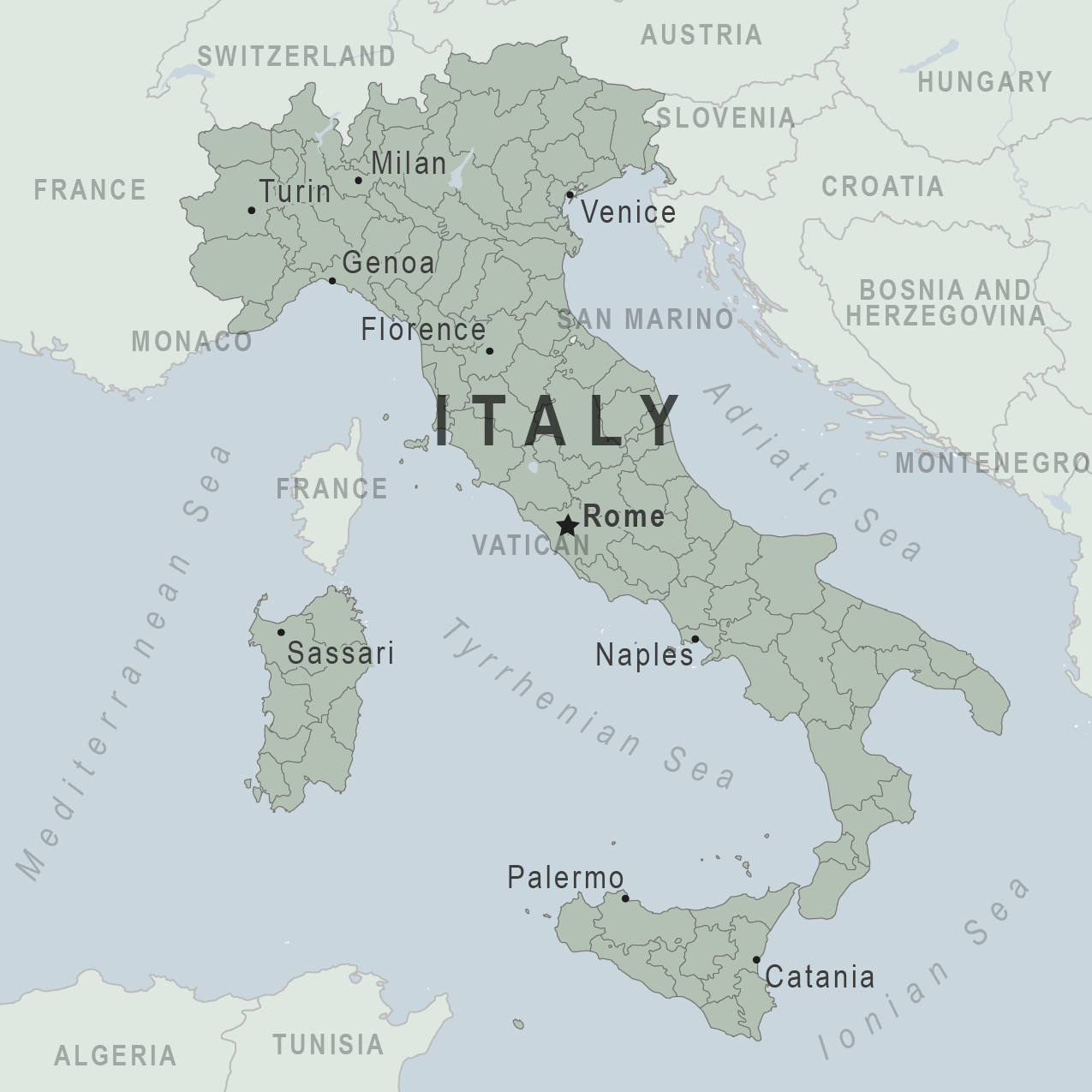
There are no notices currently in effect for Italy, including Holy See and Vatican City.
⇧ Top
Check the vaccines and medicines list and visit your doctor at least a month before your trip to get vaccines or medicines you may need. If you or your doctor need help finding a location that provides certain vaccines or medicines, visit the Find a Clinic page.
Routine vaccines
Recommendations.
Make sure you are up-to-date on all routine vaccines before every trip. Some of these vaccines include
- Chickenpox (Varicella)
- Diphtheria-Tetanus-Pertussis
- Flu (influenza)
- Measles-Mumps-Rubella (MMR)
Immunization schedules
All eligible travelers should be up to date with their COVID-19 vaccines. Please see Your COVID-19 Vaccination for more information.
COVID-19 vaccine
Hepatitis A
Consider hepatitis A vaccination for most travelers. It is recommended for travelers who will be doing higher risk activities, such as visiting smaller cities, villages, or rural areas where a traveler might get infected through food or water. It is recommended for travelers who plan on eating street food.
Hepatitis A - CDC Yellow Book
Dosing info - Hep A
Hepatitis B
Recommended for unvaccinated travelers younger than 60 years old traveling to Italy. Unvaccinated travelers 60 years and older may get vaccinated before traveling to Italy.
Hepatitis B - CDC Yellow Book
Dosing info - Hep B
Cases of measles are on the rise worldwide. Travelers are at risk of measles if they have not been fully vaccinated at least two weeks prior to departure, or have not had measles in the past, and travel internationally to areas where measles is spreading.
All international travelers should be fully vaccinated against measles with the measles-mumps-rubella (MMR) vaccine, including an early dose for infants 6–11 months, according to CDC’s measles vaccination recommendations for international travel .
Measles (Rubeola) - CDC Yellow Book
Italy is free of dog rabies. However, rabies may still be present in wildlife species, particularly bats. CDC recommends rabies vaccination before travel only for people working directly with wildlife. These people may include veterinarians, animal handlers, field biologists, or laboratory workers working with specimens from mammalian species.
Rabies - CDC Yellow Book
Tick-borne Encephalitis
For travelers moving or traveling to TBE-endemic areas
TBE vaccine is recommended for persons who will have extensive exposure to ticks based on their planned outdoor activities and itinerary.
TBE vaccine may be considered for persons who might engage in outdoor activities in areas ticks are likely to be found.
Tick-borne Encephalitis - CDC Yellow Book
Avoid contaminated water
Leptospirosis
How most people get sick (most common modes of transmission)
- Touching urine or other body fluids from an animal infected with leptospirosis
- Swimming or wading in urine-contaminated fresh water, or contact with urine-contaminated mud
- Drinking water or eating food contaminated with animal urine
- Avoid contaminated water and soil
Clinical Guidance
Avoid bug bites.
Leishmaniasis
- Sand fly bite
- Avoid Bug Bites
Airborne & droplet
- Breathing in air or accidentally eating food contaminated with the urine, droppings, or saliva of infected rodents
- Bite from an infected rodent
- Less commonly, being around someone sick with hantavirus (only occurs with Andes virus)
- Avoid rodents and areas where they live
- Avoid sick people
Tuberculosis (TB)
- Breathe in TB bacteria that is in the air from an infected and contagious person coughing, speaking, or singing.
Learn actions you can take to stay healthy and safe on your trip. Vaccines cannot protect you from many diseases in Italy, so your behaviors are important.
Eat and drink safely
Food and water standards around the world vary based on the destination. Standards may also differ within a country and risk may change depending on activity type (e.g., hiking versus business trip). You can learn more about safe food and drink choices when traveling by accessing the resources below.
- Choose Safe Food and Drinks When Traveling
- Water Treatment Options When Hiking, Camping or Traveling
- Global Water, Sanitation and Hygiene | Healthy Water
- Avoid Contaminated Water During Travel
You can also visit the Department of State Country Information Pages for additional information about food and water safety.
Prevent bug bites
Although Italy is an industrialized country, bug bites here can still spread diseases. Just as you would in the United States, try to avoid bug bites while spending time outside or in wooded areas.
What can I do to prevent bug bites?
- Cover exposed skin by wearing long-sleeved shirts, long pants, and hats.
- Use an appropriate insect repellent (see below).
- Consider using permethrin-treated clothing and gear if spending a lot of time outside. Do not use permethrin directly on skin.
What type of insect repellent should I use?
- FOR PROTECTION AGAINST TICKS AND MOSQUITOES: Use a repellent that contains 20% or more DEET for protection that lasts up to several hours.
- Picaridin (also known as KBR 3023, Bayrepel, and icaridin)
- Oil of lemon eucalyptus (OLE) or para-menthane-diol (PMD)
- 2-undecanone
- Always use insect repellent as directed.
What should I do if I am bitten by bugs?
- Avoid scratching bug bites, and apply hydrocortisone cream or calamine lotion to reduce the itching.
- Check your entire body for ticks after outdoor activity. Be sure to remove ticks properly.
What can I do to avoid bed bugs?
Although bed bugs do not carry disease, they are an annoyance. See our information page about avoiding bug bites for some easy tips to avoid them. For more information on bed bugs, see Bed Bugs .
For more detailed information on avoiding bug bites, see Avoid Bug Bites .
Stay safe outdoors
If your travel plans in Italy include outdoor activities, take these steps to stay safe and healthy during your trip:
- Stay alert to changing weather conditions and adjust your plans if conditions become unsafe.
- Prepare for activities by wearing the right clothes and packing protective items, such as bug spray, sunscreen, and a basic first aid kit.
- Consider learning basic first aid and CPR before travel. Bring a travel health kit with items appropriate for your activities.
- If you are outside for many hours in the heat, eat salty snacks and drink water to stay hydrated and replace salt lost through sweating.
- Protect yourself from UV radiation : use sunscreen with an SPF of at least 15, wear protective clothing, and seek shade during the hottest time of day (10 a.m.–4 p.m.).
- Be especially careful during summer months and at high elevation. Because sunlight reflects off snow, sand, and water, sun exposure may be increased during activities like skiing, swimming, and sailing.
- Very cold temperatures can be dangerous. Dress in layers and cover heads, hands, and feet properly if you are visiting a cold location.
Stay safe around water
- Swim only in designated swimming areas. Obey lifeguards and warning flags on beaches.
- Do not dive into shallow water.
- Avoid swallowing water when swimming. Untreated water can carry germs that make you sick.
- Practice safe boating—follow all boating safety laws, do not drink alcohol if you are driving a boat, and always wear a life jacket.
Keep away from animals
Most animals avoid people, but they may attack if they feel threatened, are protecting their young or territory, or if they are injured or ill. Animal bites and scratches can lead to serious diseases such as rabies.
Follow these tips to protect yourself:
- Do not touch or feed any animals you do not know.
- Do not allow animals to lick open wounds, and do not get animal saliva in your eyes or mouth.
- Avoid rodents and their urine and feces.
- Traveling pets should be supervised closely and not allowed to come in contact with local animals.
- If you wake in a room with a bat, seek medical care immediately. Bat bites may be hard to see.
All animals can pose a threat, but be extra careful around dogs, bats, monkeys, sea animals such as jellyfish, and snakes. If you are bitten or scratched by an animal, immediately:
- Wash the wound with soap and clean water.
- Go to a doctor right away.
- Tell your doctor about your injury when you get back to the United States.
Reduce your exposure to germs
Follow these tips to avoid getting sick or spreading illness to others while traveling:
- Wash your hands often, especially before eating.
- If soap and water aren’t available, clean hands with hand sanitizer (containing at least 60% alcohol).
- Don’t touch your eyes, nose, or mouth. If you need to touch your face, make sure your hands are clean.
- Cover your mouth and nose with a tissue or your sleeve (not your hands) when coughing or sneezing.
- Try to avoid contact with people who are sick.
- If you are sick, stay home or in your hotel room, unless you need medical care.
Avoid sharing body fluids
Diseases can be spread through body fluids, such as saliva, blood, vomit, and semen.
Protect yourself:
- Use latex condoms correctly.
- Do not inject drugs.
- Limit alcohol consumption. People take more risks when intoxicated.
- Do not share needles or any devices that can break the skin. That includes needles for tattoos, piercings, and acupuncture.
- If you receive medical or dental care, make sure the equipment is disinfected or sanitized.
Know how to get medical care while traveling
Plan for how you will get health care during your trip, should the need arise:
- Carry a list of local doctors and hospitals at your destination.
- Review your health insurance plan to determine what medical services it would cover during your trip. Consider purchasing travel health and medical evacuation insurance for things your regular insurance will not cover.
- Carry a card that identifies, in the local language, your blood type, chronic conditions or serious allergies, and the generic names of any medicines you take.
- Bring copies of your prescriptions for medicine and for eye glasses and contact lenses.
- Some prescription drugs may be illegal in other countries. Call Italy’s embassy to verify that all of your prescription(s) are legal to bring with you.
- Bring all the medicines (including over-the-counter medicines) you think you might need during your trip, including extra in case of travel delays. Ask your doctor to help you get prescriptions filled early if you need to.
Many foreign hospitals and clinics are accredited by the Joint Commission International. A list of accredited facilities is available at their website ( www.jointcommissioninternational.org ).
Select safe transportation
Motor vehicle crashes are the #1 killer of healthy US citizens in foreign countries.
Be smart when you are traveling on foot.
- Use sidewalks and marked crosswalks.
- Pay attention to the traffic around you, especially in crowded areas.
- Remember, people on foot do not always have the right of way in other countries.
Riding/Driving
Choose a safe vehicle.
- Choose official taxis or public transportation, such as trains and buses.
- Make sure there are seatbelts.
- Avoid overcrowded, overloaded, top-heavy buses and minivans.
- Avoid riding on motorcycles or motorbikes, especially motorbike taxis. (Many crashes are caused by inexperienced motorbike drivers.)
- Choose newer vehicles—they may have more safety features, such as airbags, and be more reliable.
- Choose larger vehicles, which may provide more protection in crashes.
Think about the driver.
- Do not drive after drinking alcohol or ride with someone who has been drinking.
- Consider hiring a licensed, trained driver familiar with the area.
- Arrange payment before departing.
Follow basic safety tips.
- Wear a seatbelt at all times.
- Sit in the back seat of cars and taxis.
- When on motorbikes or bicycles, always wear a helmet. (Bring a helmet from home, if needed.)
- Do not use a cell phone or text while driving (illegal in many countries).
- Travel during daylight hours only, especially in rural areas.
- If you choose to drive a vehicle in Italy, learn the local traffic laws and have the proper paperwork.
- Get any driving permits and insurance you may need. Get an International Driving Permit (IDP). Carry the IDP and a US-issued driver's license at all times.
- Check with your auto insurance policy's international coverage, and get more coverage if needed. Make sure you have liability insurance.
- Avoid using local, unscheduled aircraft.
- If possible, fly on larger planes (more than 30 seats); larger airplanes are more likely to have regular safety inspections.
- Try to schedule flights during daylight hours and in good weather.
Helpful Resources
Road Safety Overseas (Information from the US Department of State): Includes tips on driving in other countries, International Driving Permits, auto insurance, and other resources.
The Association for International Road Travel has country-specific Road Travel Reports available for most countries for a minimal fee.
For information traffic safety and road conditions in Italy, see Travel and Transportation on US Department of State's country-specific information for Italy .
Maintain personal security
Use the same common sense traveling overseas that you would at home, and always stay alert and aware of your surroundings.
Before you leave
- Research your destination(s), including local laws, customs, and culture.
- Monitor travel advisories and alerts and read travel tips from the US Department of State.
- Enroll in the Smart Traveler Enrollment Program (STEP) .
- Leave a copy of your itinerary, contact information, credit cards, and passport with someone at home.
- Pack as light as possible, and leave at home any item you could not replace.
While at your destination(s)
- Carry contact information for the nearest US embassy or consulate .
- Carry a photocopy of your passport and entry stamp; leave the actual passport securely in your hotel.
- Follow all local laws and social customs.
- Do not wear expensive clothing or jewelry.
- Always keep hotel doors locked, and store valuables in secure areas.
- If possible, choose hotel rooms between the 2nd and 6th floors.
Healthy Travel Packing List
Use the Healthy Travel Packing List for Italy for a list of health-related items to consider packing for your trip. Talk to your doctor about which items are most important for you.
Why does CDC recommend packing these health-related items?
It’s best to be prepared to prevent and treat common illnesses and injuries. Some supplies and medicines may be difficult to find at your destination, may have different names, or may have different ingredients than what you normally use.
If you are not feeling well after your trip, you may need to see a doctor. If you need help finding a travel medicine specialist, see Find a Clinic . Be sure to tell your doctor about your travel, including where you went and what you did on your trip. Also tell your doctor if you were bitten or scratched by an animal while traveling.
For more information on what to do if you are sick after your trip, see Getting Sick after Travel .
Map Disclaimer - The boundaries and names shown and the designations used on maps do not imply the expression of any opinion whatsoever on the part of the Centers for Disease Control and Prevention concerning the legal status of any country, territory, city or area or of its authorities, or concerning the delimitation of its frontiers or boundaries. Approximate border lines for which there may not yet be full agreement are generally marked.
Other Destinations
If you need help finding travel information:
Message & data rates may apply. CDC Privacy Policy
File Formats Help:
- Adobe PDF file
- Microsoft PowerPoint file
- Microsoft Word file
- Microsoft Excel file
- Audio/Video file
- Apple Quicktime file
- RealPlayer file
- Zip Archive file
Exit Notification / Disclaimer Policy
- The Centers for Disease Control and Prevention (CDC) cannot attest to the accuracy of a non-federal website.
- Linking to a non-federal website does not constitute an endorsement by CDC or any of its employees of the sponsors or the information and products presented on the website.
- You will be subject to the destination website's privacy policy when you follow the link.
- CDC is not responsible for Section 508 compliance (accessibility) on other federal or private website.

Last verified: Sunday, 28. April 2024 at 08:22 AM
Italy Travel Advisory
- Southern Europe
- Italy Travel Advice
We advise caution when travelling to Italy
Local situation: 3.0 / 5.
We advise caution when travelling to Italy. We detected travel advisories from 7 sources for this specific country.
Regional Situation: 3.7 / 5
Italy shares a land border with 6 neighbouring states. For this region of countries (including Italy), the Advisory Index is 3.7 (average value over all countries). All countries have some reported advisories: San Marino (5), Vatican (5), Switzerland (4), Austria (3), France with 3 and Slovenia with 3 (of 5).
Current informationen on Covid-19 in Italy
There are currently no officially reported cases of infections with SARS-CoV-2 (or Coronavirus) in Italy. As reported by the European Centre for Disease Prevention and Control this morning (~8:30am CET).
There are currently no officially reported deaths related to this disease in Italy.
Source: www.ecdc.europa.eu
Advice scoring history for Italy
Chart of the risk level over that last 200 days. This is the daily calculated travel risk for Italy.
Chart of the number of sources over that last 200 days. This is the daily number of advisory sources (of any rating) that have been active on that day.
Note: Changes happening on the 28th/29th of July 2019 are related to a change in the software and number of sources processed.
Rating Details (single travel warnings)
These are the individual advisories published by other countries about the destination Italy from a travellers perspective. The scoring of all messages combined is the foundation for the current rating 3.0 out of 5.0 .
This is the general advisory usually covering the country as a whole.
Advisory issued by: Canada

Source: https://travel.gc.ca/destinations/italy
Advisory issued by: New Zealand

Exercise increased caution in Italy (level 2 of 4).
Source: https://www.safetravel.govt.nz/italy
Advisory issued by: United States

Reissued with obsolete COVID-19 page links removed. Exercise increased caution due to terrorism. Country Summary: Terrorist groups continue plotting possible attacks in Italy. Terrorists may attack with little or no warning, targeting tourist locations, transportation hubs, markets/shopping malls, local government facilities, hotels, clubs, restaurants, places ...
Source: http://travel.state.gov/content/travel/en/traveladvisories/traveladvisories/italy-travel-advisory.html
Advisory issued by: Finland

Iaktta normal försiktighet - Tryggt resmål. Se upp för ficktjuvar. Demonstrationer förekommer. Undvik folksamlingar.
Source: https://um.fi/resemeddelande/-/c/IT
Individual rating changes for Italy
This is the recent history of individual changes of travel advices that affected the total asessment of Italy. Most recent events first.
Changes from September 18th 2020
The total rating for Italy changed from 3.2 to 3.6 . Here are the influencing details:

The Irish government increased their existing warning for Italy to 4.0 (of 5.0) from the previous rating of 1.0 (by +3.0).
Changes from July 22nd 2020
The total rating for Italy changed from 3.6 to 3.2 . Here are the influencing details:
The Irish government decreased their existing warning for Italy to 1.0 (of 5.0) from the previous rating of 4.0 (by -3.0).
Changes from June 27th 2020
The total rating for Italy changed from 3.7 to 3.6 . Here are the influencing details:

The Danish government decreased their existing warning for Italy to 3.0 (of 5.0) from the previous rating of 4.0 (by -1.0).
Changes from June 11th 2020
The total rating for Italy changed from 3.9 to 3.7 . Here are the influencing details:

The Austrian government decreased their existing warning for Italy to 3.0 (of 5.0) from the previous rating of 5.0 (by -2.0).
Changes from June 9th 2020
The total rating for Italy changed from 4.1 to 3.9 . Here are the influencing details:

The Finnish government decreased their existing warning for Italy to 2.0 (of 5.0) from the previous rating of 4.0 (by -2.0).
Changes from May 15th 2020
The total rating for Italy changed from 4.2 to 4.1 . Here are the influencing details:
The Irish government decreased their existing warning for Italy to 4.0 (of 5.0) from the previous rating of 5.0 (by -1.0).
Changes from March 28th 2020
The total rating for Italy changed from 4.3 to 4.2 . Here are the influencing details:
The Finnish government issued a new warning for Italy with a rating of 4.0.
Changes from March 27th 2020
The total rating for Italy changed from 4.2 to 4.3 . Here are the influencing details:
The Finnish government removed their warning for Italy with a previous rating of 0.0.
Changes from March 18th 2020
The total rating for Italy changed from 4.1 to 4.2 . Here are the influencing details:

The Australian government increased their existing warning for Italy to 5.0 (of 5.0) from the previous rating of 4.0 (by +1.0).
Changes from March 11th 2020
The total rating for Italy changed from 3.7 to 4.1 . Here are the influencing details:
The Irish government increased their existing warning for Italy to 5.0 (of 5.0) from the previous rating of 3.0 (by +2.0).
The Austrian government increased their existing warning for Italy to 5.0 (of 5.0) from the previous rating of 3.0 (by +2.0).
Changes from March 10th 2020
The total rating for Italy changed from 3.1 to 3.7 . Here are the influencing details:

The Canadian government issued a new warning for Italy with a rating of 4.0.
The Danish government increased their existing warning for Italy to 4.0 (of 5.0) from the previous rating of 3.0 (by +1.0).

The New Zealand government increased their existing warning for Italy to 4.0 (of 5.0) from the previous rating of 2.0 (by +2.0).
The Australian government issued a new warning for Italy with a rating of 4.0.
Changes from March 9th 2020
The total rating for Italy changed from 3.0 to 3.1 . Here are the influencing details:
The Finnish government increased their existing warning for Italy to 4.0 (of 5.0) from the previous rating of 3.0 (by +1.0).
Changes from March 4th 2020
The total rating for Italy changed from 2.7 to 3.0 . Here are the influencing details:
The Irish government increased their existing warning for Italy to 3.0 (of 5.0) from the previous rating of 1.0 (by +2.0).
Changes from February 29th 2020
The total rating for Italy changed from 2.4 to 2.7 . Here are the influencing details:

The United States government increased their existing warning for Italy to 4.0 (of 5.0) from the previous rating of 2.0 (by +2.0).
Changes from February 27th 2020
The total rating for Italy changed from 2.3 to 2.4 . Here are the influencing details:

The Cypriot government issued a new warning for Italy with a rating of 3.0.
Changes from February 26th 2020
The total rating for Italy changed from 2.2 to 2.3 . Here are the influencing details:
The Danish government increased their existing warning for Italy to 3.0 (of 5.0) from the previous rating of 2.0 (by +1.0).
Changes from February 25th 2020
The total rating for Italy changed from 1.8 to 2.2 . Here are the influencing details:
The Finnish government increased their existing warning for Italy to 3.0 (of 5.0) from the previous rating of 2.0 (by +1.0).
The Austrian government issued a new warning for Italy with a rating of 3.0.
Changes from September 25th 2019
The total rating for Italy changed from 0.0 to 0.0 . Here are the influencing details:
The United States government issued a new warning for Italy with a rating of 2.0.
The Danish government issued a new warning for Italy with a rating of 2.0.
The Finnish government issued a new warning for Italy with a rating of 2.0.
The Irish government issued a new warning for Italy with a rating of 1.0.
The New Zealand government issued a new warning for Italy with a rating of 2.0.
About Italy
Italy with its capital Rome is a country in Europe (Southern Europe), slightly larger than Arizona (301,230 km²). The country is located Southern Europe, a peninsula extending into the central Mediterranean Sea, northeast of Tunisia. The climate can be described as predominantly Mediterranean; Alpine in far north; hot, dry in south. The landscape is mostly rugged and mountainous; some plains, coastal lowlands. With a population of about 58.15 million citizens.
Italian flag

Introduction Video
Basic Statistics and Facts
Environmental problems and natural hazzards.
These are problems Italy is facing. Environmental issues refer to damages of the nature due to industry and society. Natural hazzards refer to potential dangers originating in nature.
Environmental problems
- acid rain damaging lakes
- air pollution from industrial emissions such as sulfur dioxide
- coastal and inland rivers polluted from industrial and agricultural effluents
- inadequate industrial waste treatment and disposal facilities
Natural hazzards
- land subsidence in Venice
- regional risks include landslides, mudflows, avalanches, earthquakes, volcanic eruptions, flooding
- significant volcanic activity; Etna (3,330 m), which is in eruption as of 2010, is Europe's most active volcano; flank eruptions pose a threat to nearby Sicilian villages; Etna, along with the famous Vesuvius, which remains a threat to the millions of nea
Top Industries and Agricultural Products
These are the main product industries and agricultural products of Italy. This list indicates what this country is good at producing.
- food processing
- motor vehicles
Agriculture products
- dairy products
- sugar beets
Italian Imports and Exports
These are the main product categories of imports and exports to and from Italy.
Export products
- engineering products
- nonferrous metals
- production machinery
Import products
- energy products
Frequently Asked Questions
What is the current travel advisory for italy.
Italy is currently rated at 3,0 out of a possible 5.0. Collected from 7 official sources. We advise caution when travelling to Italy.
Is it safe to travel Italy in 2024?
Visiting the country Italy is usually fine. The score is at 3,0 Just keep an eye open, obey local rules and you'll most likely be fine.
How many travel advisories do you know for Italy?
We currently evaluate 11 official sources each morning. Today, we know of active advisories from 7 individual sources for Italy.
What is the current Corona virus situation in Italy?
There are currently no officially reported cases of infections with SARS-CoV-2 (or Coronavirus) in Italy. As reported by the European Centre for Disease Prevention and Control this morning (~8:30am CET). There are currently no officially reported deaths related to this disease in Italy.
What is the size of Italy?
Italy has a size of 301,230 km² or 116,306 mi² which is slightly larger than Arizona.
Common Frequently Asked Questions
For non-country specific questions, please check our global F.A.Q.
Travel safety map for Italy and bordering countries.
If you want to embed Italy travel warning information into your website or application, check out these tools.
- Is Italy safe to travel?
- What's the safety situation in Italy?
- Are there security warnings for Italy?

2020-03-10: Integrated data from European Centre for Disease Prevention and Control (COVID-19/ SARS-CoV-2/ Coronavirus).
2019-09-01: Added timeline charts for risk level and number of advisories.
2019-07-29: Added two more sources (Finland and Denmark). Affects country ratings.
2019-07-15: South-Sudan was missing and was added today.
2019-05-18: Performance improvements for API users.
2019-03-23: Introduced professional API with more data.
2019-02-13: Added three more sources (Cyprus, Ireland and Malta). Affects country ratings.
Want to work remotely in Italy? The country just launched its new digital nomad visa.

Remote workers with dreams of working from the rolling hills of Tuscany or the cliffs of Positano are now one step closer to making that reality. Italy launched a new digital nomad visa.
Two years after its announcement, the highly anticipated digital nomad visa officially became available for those eligible on April 4.
“Italian-style, everything happens slowly,” said Nick Metta, a lawyer for the law firm Studio Legale Metta , which has helped Americans relocate to Italy for decades. “Now there is a pipeline of people waiting just to file the application. It's been a long-awaited visa.”
Most of Metta’s clients would previously apply for a student visa, which allowed them to work part time in Italy.
Under the new visa, people will be able to work from Italy for one year, with the option to renew once their visa is due for expiration. Without a visa, U.S. travelers could only stay in Italy for up to 90 days without the ability to work.
Learn more: Best travel insurance
The launch makes Italy the latest European country to offer a digital nomad visa , which has already been available in Greece and Hungary.
Here’s everything we know about the digital nomad visa for Italy:
Destinations behind a paywall? What to know about the increasing tourist fees worldwide.
Who can apply for a digital nomad visa in Italy?
According to the official decree , the visa is meant for those who “carry out a highly qualified work activity through the use of technological tools that allow you to work remotely.”
The regulations define eligible applicants as “digital nomads,” self-employed freelancers, “remote workers,” or those employed by a company outside of Italy and can work from anywhere, according to Studio Legale Metta.
To qualify for the visa, the applicant has to meet certain requirements:
◾ A university or college degree or an accredited professional license.
◾ Six months of work experience in the industry, or five years for applicants without a university degree.
◾ An existing employment contract.
◾ A criminal record check.
◾ Proof of an annual income of 28,000 euros (about $29,880.06).
◾ Evidence of housing in Italy.
◾ Evidence of health insurance coverage.
Applicants can also apply to have family members join them on their Italian move, but the government has to give the final approval.
How do I apply for the digital nomad visa in Italy?
Thankfully, Metta said the paperwork for the digital nomad visa isn’t “too complicated.”
The first stop for interested applicants will be the Italian Consulate for their area. “Consulates are basically the front of the government to receive the applications,” Metta said. Interested applicants can book an appointment with the consulate and start gathering their necessary documents. People can also apply by mailing in their application. (However, Metta did mention consulate websites are often confusing and outdated, so working with a relocation service can make things easier.)
To apply, applicants will also need a passport with an expiration date at least three months after the end of the visa period and two passport-sized photos.
Relocation services can also help people navigate the sometimes complicated process of applying for a visa, such as negotiating early termination penalties with landlords in Italy.
These services also help people with state and tax planning, especially if people own assets in the U.S., like a house. Once in Italy, people need to register their residency with the town hall, which will determine what sort of taxes they’ll pay. People can speak to an international tax specialist to figure out their future taxes as well.
How much will the visa cost?
According to Studio Legale Metta, the application fee is 116 euros (about $123.78) per person.
How long will the application process take?
Not too long, actually. Metta estimates the process could take just three weeks if applicants are “well-organized and have all your tax documents filed.”
Kathleen Wong is a travel reporter for USA TODAY based in Hawaii. You can reach her at [email protected] .
We’re sorry, this site is currently experiencing technical difficulties. Please try again in a few moments. Exception: request blocked

IMAGES
COMMENTS
Travel Advisory. July 26, 2023. Italy - Level 2: Exercise Increased Caution. T. Reissued with obsolete COVID-19 page links removed. Exercise increased caution due to terrorism. Country Summary: Terrorist groups continue plotting possible attacks in Italy. Terrorists may attack with little or no warning, targeting tourist locations ...
However, if the CDC raises a country's COVID-19 THN to a Level 4, the State Department's Travel Advisory for that country will also be raised to a Level 4: Do Not Travel due to COVID-19. This update will leave approximately 10% of all Travel Advisories at Level 4: Do Not Travel. This 10% includes Level 4 Travel Advisories for all risk ...
The Centers for Disease Control and Prevention (CDC) has issued a Level 4 Travel Health Notice for Italy due to COVID-19, indicating a very high level of COVID-19 in the country. There are restrictions in place affecting U.S. citizen entry into Italy. Your risk of contracting COVID-19 and developing severe symptoms may be lower if you are fully vaccinated with an FDA authorized vaccine. Before ...
Find continuously updated travel restrictions for Italy such as border, vaccination, COVID-19 testing, and quarantine requirements.
Many countries, including the US, require passengers to present a negative COVID-19 test result before boarding their flight home from an international trip. Fortunately, tests are widely available across Italy in pharmacies, labs and testing centers. Antigen tests cost approximately €20, while PCR tests are generally around €65.
Considering the epidemiological situation, Italy has foreign travel restrictions in place depending on where you are travelling from/to. An interactive questionnaire is available from https://infocovid.viaggiaresicuri.it to check the rules currently in force regarding travel to and from Italy. Please find below a list of other useful web pages:
Testing requirement for all arrivals. The Italian government on Tuesday night announced tightened travel restrictions for arrivals from other countries within the European Union (or Italy's travel list C) meaning from Thursday December 16th all travellers will now need to show a negative test result regardless of their vaccination status, and unvaccinated arrivals must also undergo a five-day ...
Travel from within the EU. On January 27th, the Italian government confirmed there would be a change for arrivals from the EU from the start of February: anyone travelling to Italy from within the bloc now needs to show proof of vaccination, recovery, or a recent negative Covid test to enter the country without a self-isolation requirement.
The change from March 1st applies only to the rules when entering Italy. Travellers should be aware that a different, stricter set of measures is in force within the country. Italy has recently expanded the use of its domestic 'green pass' proving vaccination, testing or recovery. So, even though you may enter Italy with just a negative ...
Covid-free tourist corridors are considered to be all routes departing from and arriving in Italy for tourist travel to Aruba, Maldives, Mauritius, Seychelles, Dominican Republic, Egypt (limitedly to the tourist zones of Sharm El Sheikh and Marsa Alam), organised according to the specific health safety measures as identified in the Ordinance ...
The US State Department has updated its travel advisory for Italy to the second-highest-level warning, ... Italy is been upgraded to CDC's Warning Level 3, the same level as South Korea and China.
The Centers for Disease Control and Prevention (CDC) has issued a Level 4 Travel Health Notice for Italy due to COVID-19, indicating a very high level of COVID-19 in country. Visit the Embassy's COVID-19 page for more information on COVID-19 in Italy. There are restrictions in place affecting U.S. citizen entry into Italy.
Italy Travel Level 4 is a classification used by the US Department of State to advise travelers on the current situation in Italy. A Level 4 travel advisory indicates a very high level of COVID-19 risk and advises against any travel to the destination. For Italy, this means that travelers should avoid all travel to the country due to the risk ...
As of June 2022, all travelers, including US citizens are no longer required to show a vaccination, recovery, or test certificate upon arrival to Italy. All travelers can enter Italy without quarantine. Most Italy travel restrictions have been lifted as of May 1 for activities inside the country.
25 January 2024. Latest update: Information that if you are visiting Venice, you may need to pay an access fee (Under 'Tourist tax' on the 'Safety and security' page). This travel advice ...
The Department of State has issued a Level 3 Travel Advisory for Italy recommending that travelers avoid all nonessential travel (including tourism) to Italy. In addition, the Centers for Disease Control (CDC) has issued a Level 4 Health Notice for Italy due to COVID-19 concerns and recommends that travelers should avoid all travel to Italy.
Italy Travel Advisory : Level 2: Exercise Increased Caution: July 26, 2023: Jamaica Travel Advisory: Level 3: Reconsider Travel: January 23, 2024: Jordan Travel Advisory: Level 2: Exercise Increased Caution: July 13, 2023: Kenya Travel Advisory : Level 2: Exercise Increased Caution: July 31, 2023: North Korea (Democratic People's Republic of ...
The level of risk of dengue changes seasonally, and varies from year to year. The level of risk also varies between regions in a country and can depend on the elevation in the region. Mosquitoes carrying dengue typically bite during the daytime, particularly around sunrise and sunset. Protect yourself from mosquito bites. There is no vaccine or ...
If your travel plans in Italy include outdoor activities, take these steps to stay safe and healthy during your trip: Stay alert to changing weather conditions and adjust your plans if conditions become unsafe. Prepare for activities by wearing the right clothes and packing protective items, such as bug spray, sunscreen, and a basic first aid ...
Lombardy and Veneto due to the level of community transmission of the virus and imposition of local quarantine procedures. There is an ongoing outbreak of COVID-19 caused by a novel (new) coronavirus in Italy. Many cases of COVID-19 have been associated with travel to or from mainland China or close contact with a travel-related case, but sustained community spread has been reported in Italy.
Italy shares a land border with 6 neighbouring states. For this region of countries (including Italy), the Advisory Index is 3.7 (average value over all countries). All countries have some reported advisories: San Marino (5), Vatican (5), Switzerland (4), Austria (3), France with 3 and Slovenia with 3 (of 5).
Under the new visa, people will be able to work from Italy for one year, with the option to renew once their visa is due for expiration. Without a visa, U.S. travelers could only stay in Italy for ...
The Department of State has issued a Level 3 Travel Advisory for Italy recommending that travelers avoid all nonessential travel (including tourism) to Italy. In addition, the Centers for Disease Control (CDC) has issued a Level 4 Health Notice for Italy due to COVID-19 concerns and recommends that travelers should avoid all travel to Italy.